Petra: One of the many highlights of Jordan. The iconic Treasury was featured in Indiana Jones and the last crusade and I don’t know anyone whose seen that movie and not dreamt of visiting this place since. Petra is so much more than the Treasury however; it’s miles and miles of wonderful archeological sites and definitely requires more than a day if you actually want to cover all the trails and see all the major points. Don’t worry though if you only have one day- just make it a full one and follow the tips below to get the absolute most out of visiting this once in a lifetime place.
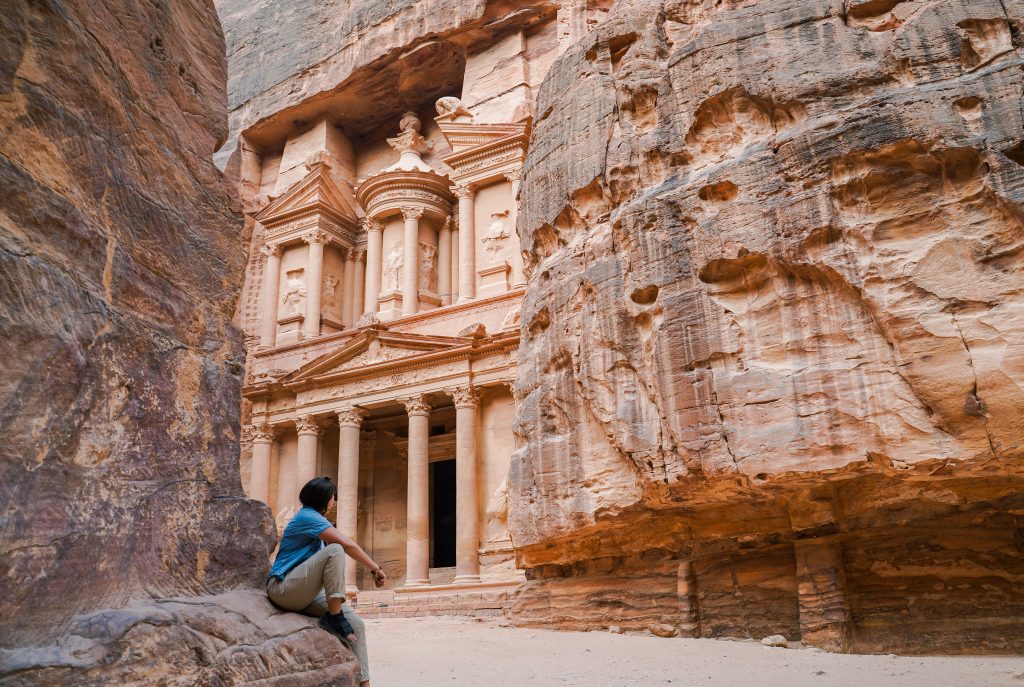
Table of Contents:
- Tips for visiting
- Practical Information
- Petra at Night Information
- Main Points of Interest
- Trail Descriptions (and map)
- My recommended trail route to see the most in one day
- A brief history of Petra
- About our experience
- Where to stay on a visit to Petra
Tips for visiting Petra:
- Stay in town the night before so you can visit Petra (Wadi Musa) right at opening time! (Biggest tip of all)
- Wear your comfiest walking/ hiking shoes. We hiked 8 miles on our visit and still barely scratched the surface
- If the trail you are on is on the map you get with your ticket, don’t listen to the scammers who say it is “closed”
- Beware scammers in general. There are lots of salesman camped out along narrow trails. Try not to engage with them unless you actually want to buy something. (or they won’t leave you alone)
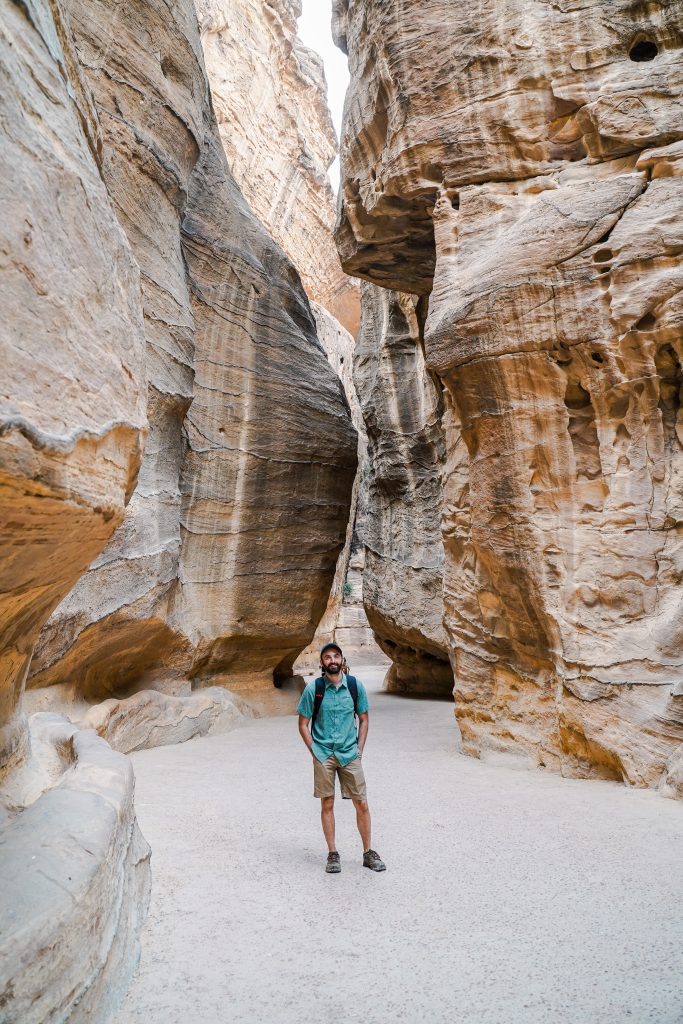
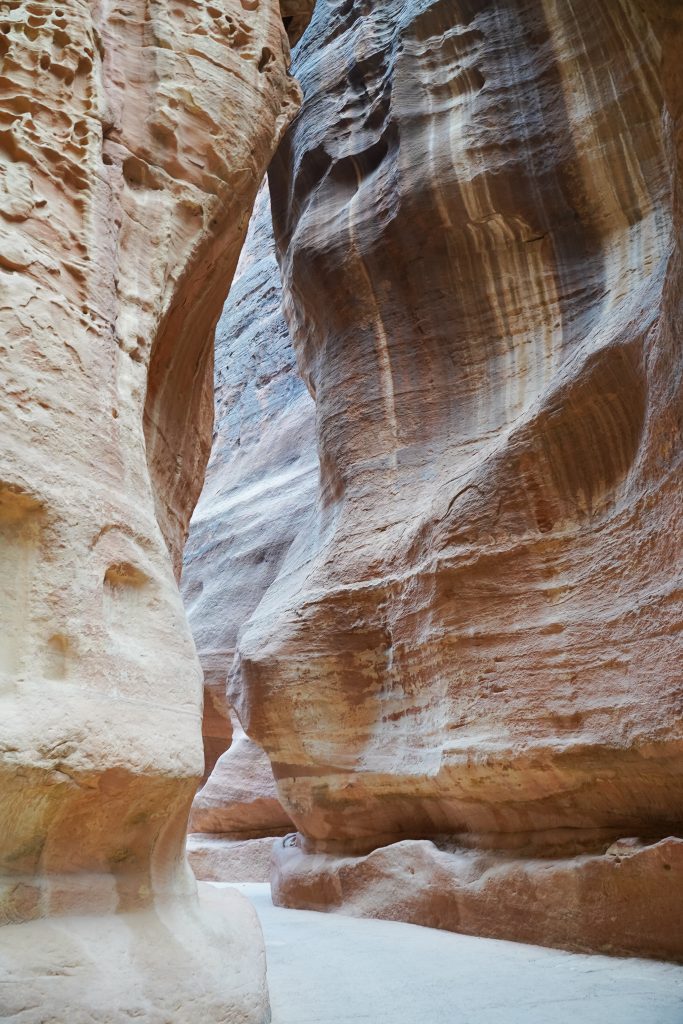
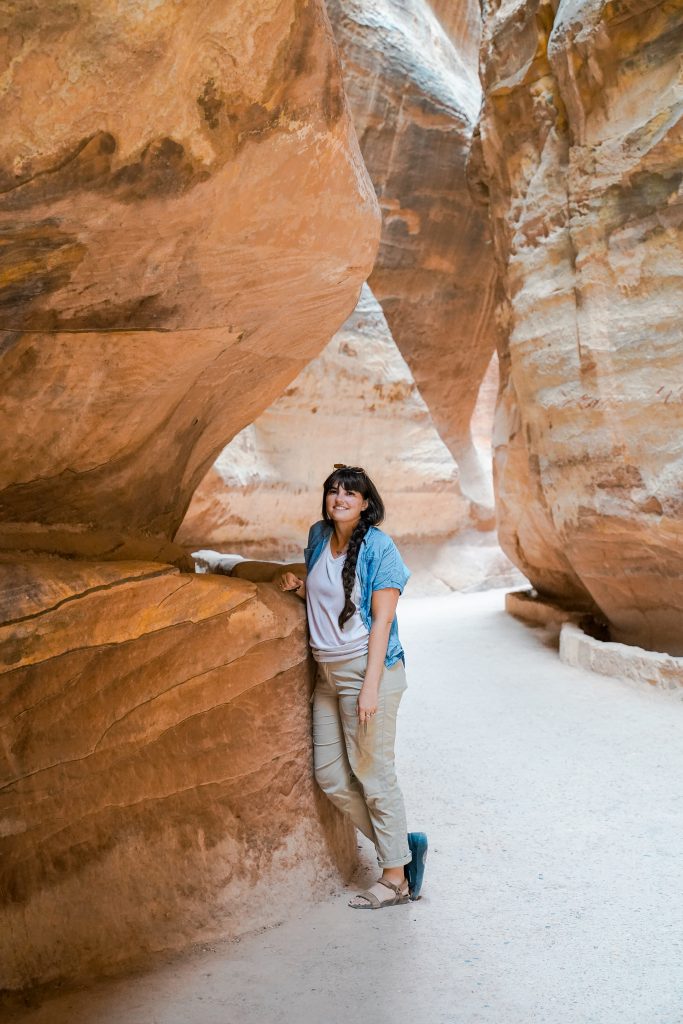
- Don’t pay more than $5 in a tip for the included horseback ride. Make sure to settle any prices or tips before getting on the horse.
- Bring plenty of sunscreen, water, and snacks. You will be there ALL DAY. There are places to buy more if you need them, but the tents are very pricey.
- Stay on the designated trails on the map- don’t pay the people who take you on dangerous and ILLEGAL trails to get a quicker view of the top of the Treasury.
- Verify the days “Petra at Night” is offered when booking your trip. It is only a select few nights a week and if you’re interested in this, make sure you plan for it!
- Hire a guide for at least the first walk to the Treasury and Street of Facades. It was very interesting learning about what life was like in ancient Petra as we were guided through.
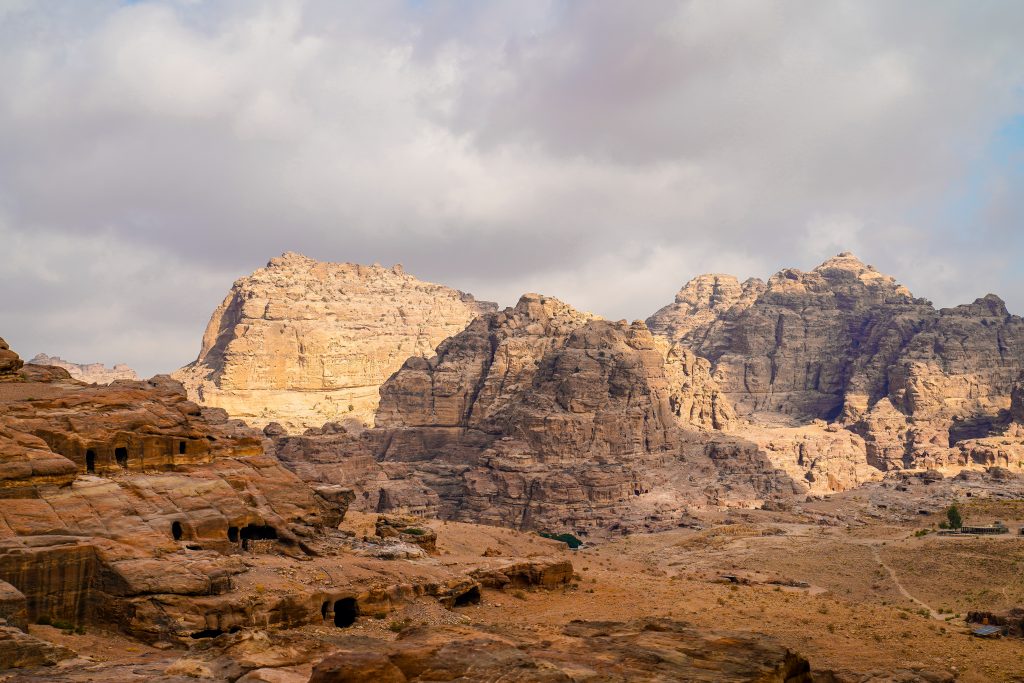
Practical Information:
- Hours: Open daily from 6AM to 6PM in the summer; 6AM to 4PM in the winter.
Ticket price:
- One day: 50 JD
- Two days: 55 JD
- Three days: 60 JD
*There’s no price difference for children. Plan ahead whether you’d like to visit for more than one day since the price is much cheaper then.
*You will need to submit your passport at the tickets office to purchase- make sure you bring it with you.
*If you don’t have a guide previously arranged, you can hire a licensed one at the visitor center when you buy tickets for around 50JD+ depending on how much of the site you would like guided.
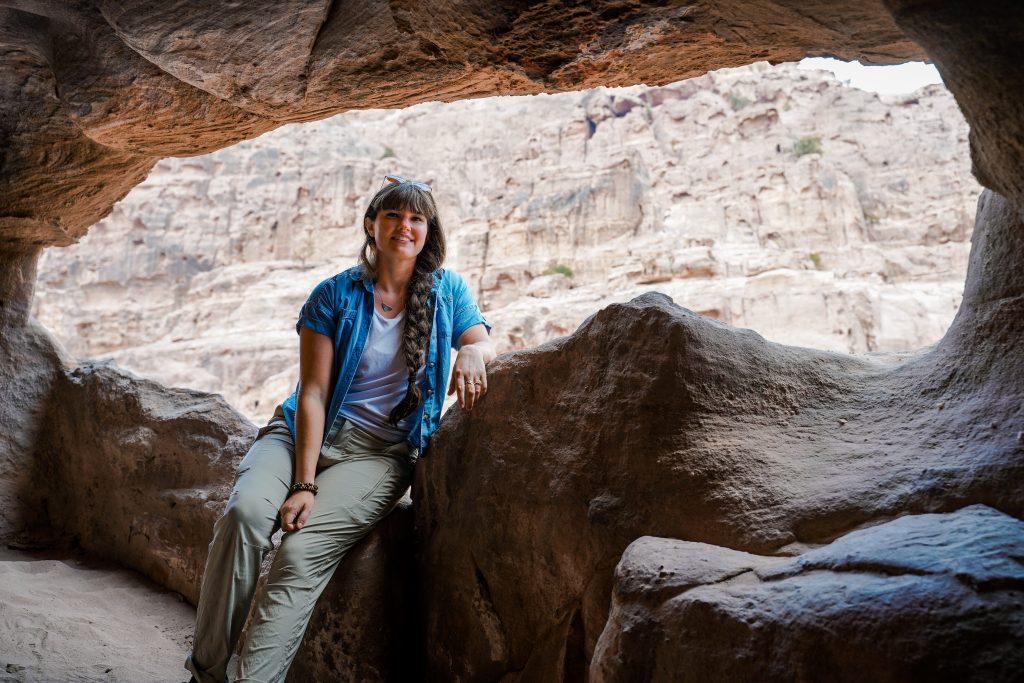

Petra at Night Information:
Petra by Night runs every Monday, Wednesday and Thursday of each week. It starts at 20:30 from Petra Visitor Centre and delivers you back by licensed guide to the Visitor Centre around 22.30pm. You must have daylight tickets for the day of your nighttime visit. The nighttime ticket however is NOT included and is an extra fee of 17 JD. (Children 10 and under are free for the night time show)
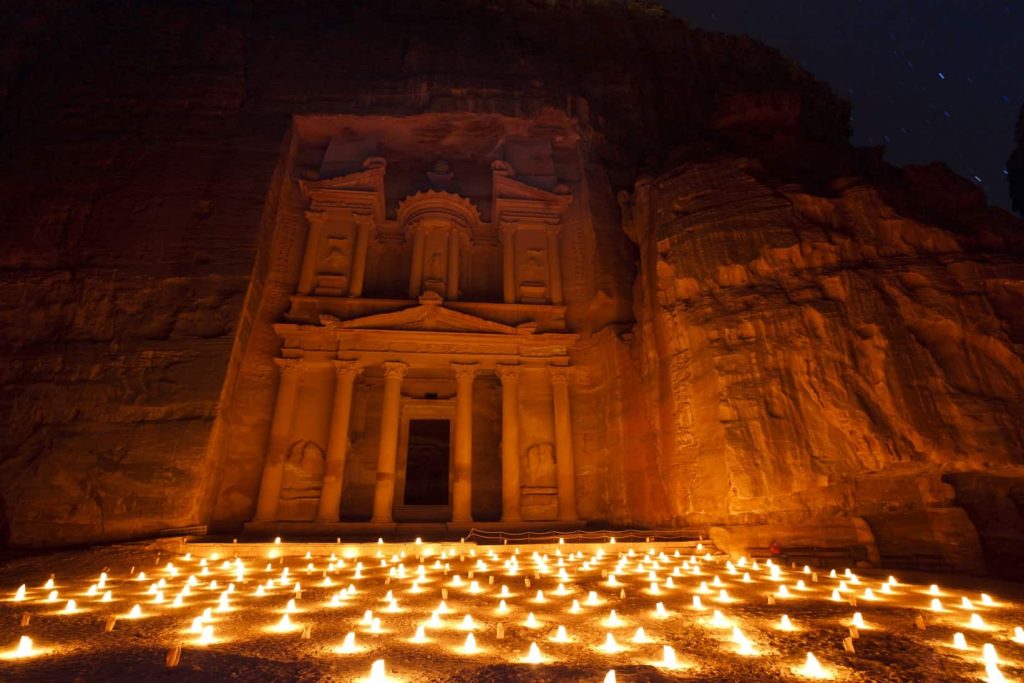
How to get to Petra:
By Car: It is a 3 hours drive south of Amman on the desert highway or 4 hours on the more scenic Kings’ Highway to Wadi Musa. (Modern town just outside of Petra archeological site)
By Bus: JETT Bus leaves from Abdali station in Amman at 6.30 and arrives to Petra around 10.30. And it runs back on the same day at 17.00 (Summer season) 16.00 (Winter season)
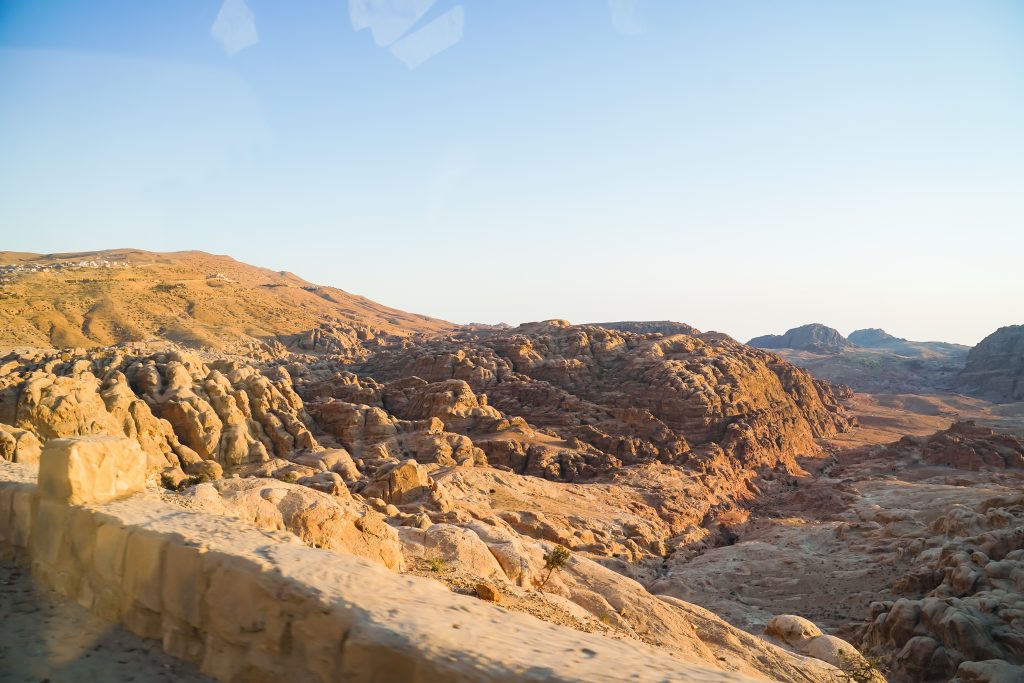
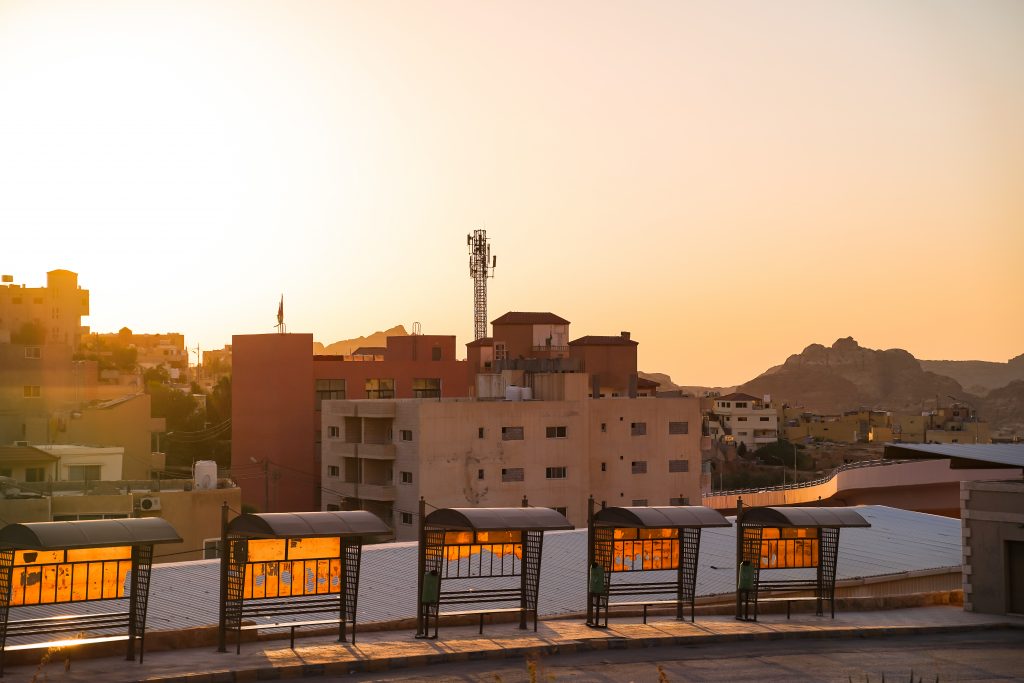
Main points of interest on their respective trails :
- The Siq (main trail) – This is the picturesque slot canyon that is almost 1 mile in length and ends at the iconic Treasury. While the canyon itself is special and beautiful in its own right, the carvings done by the Nabateans make it one of the most unique slot canyons in the world. Running the entire length of the canyon on both sides is a carved canal that was used for transporting water from the dam into town. There are also a number of decorative carvings, shrines, and statue remnants so keep an eye out.
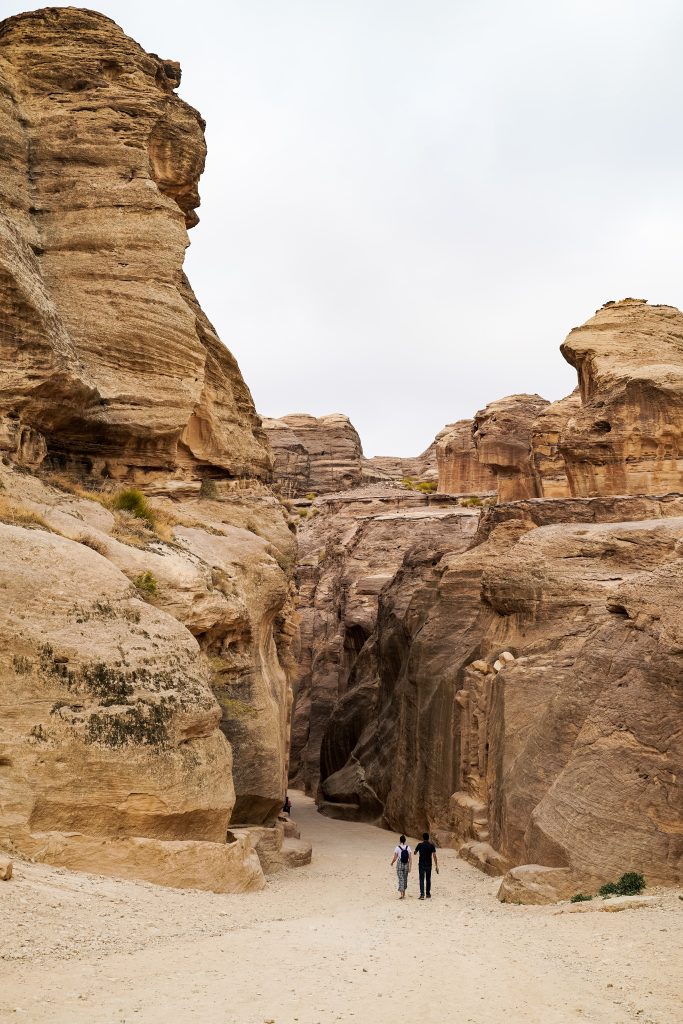
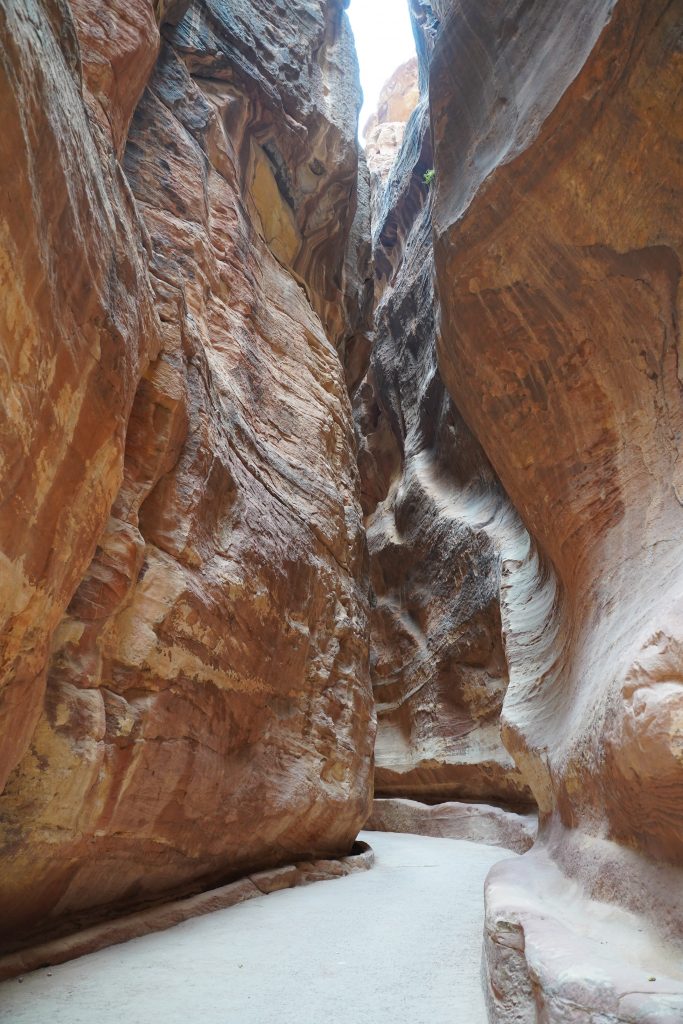
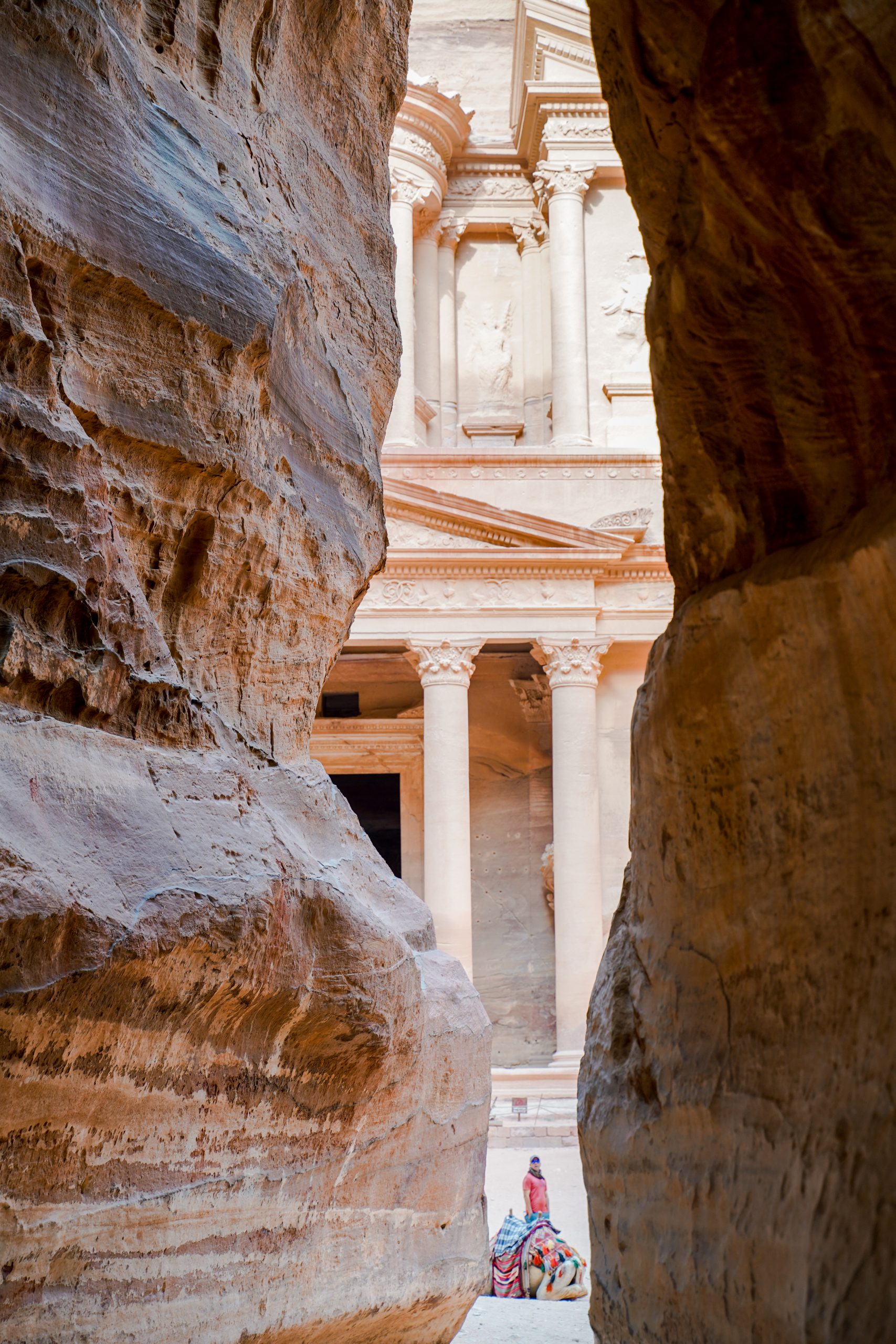
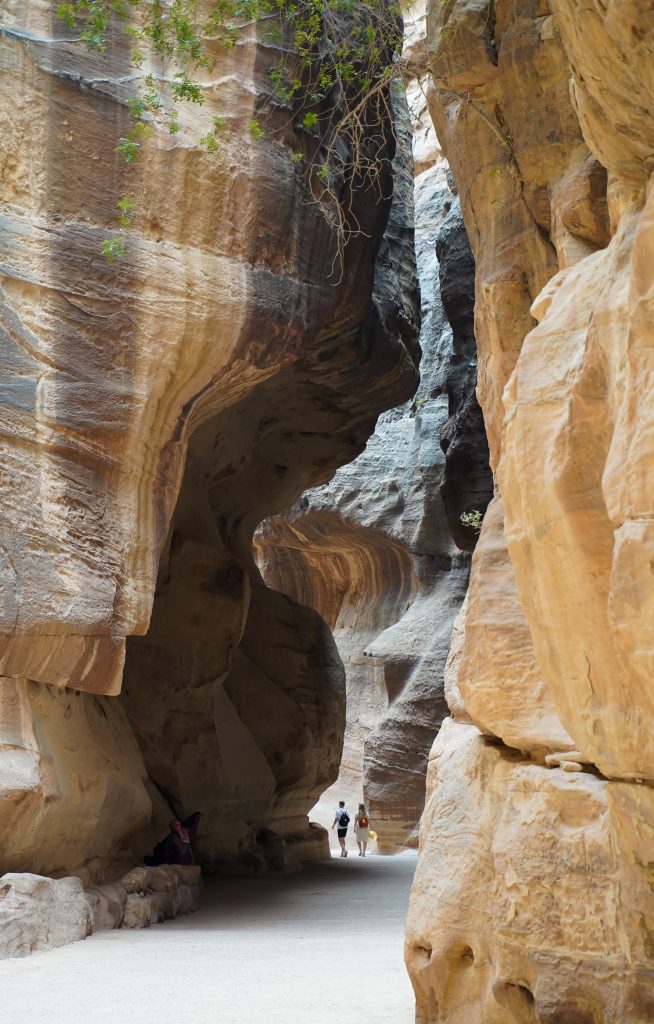
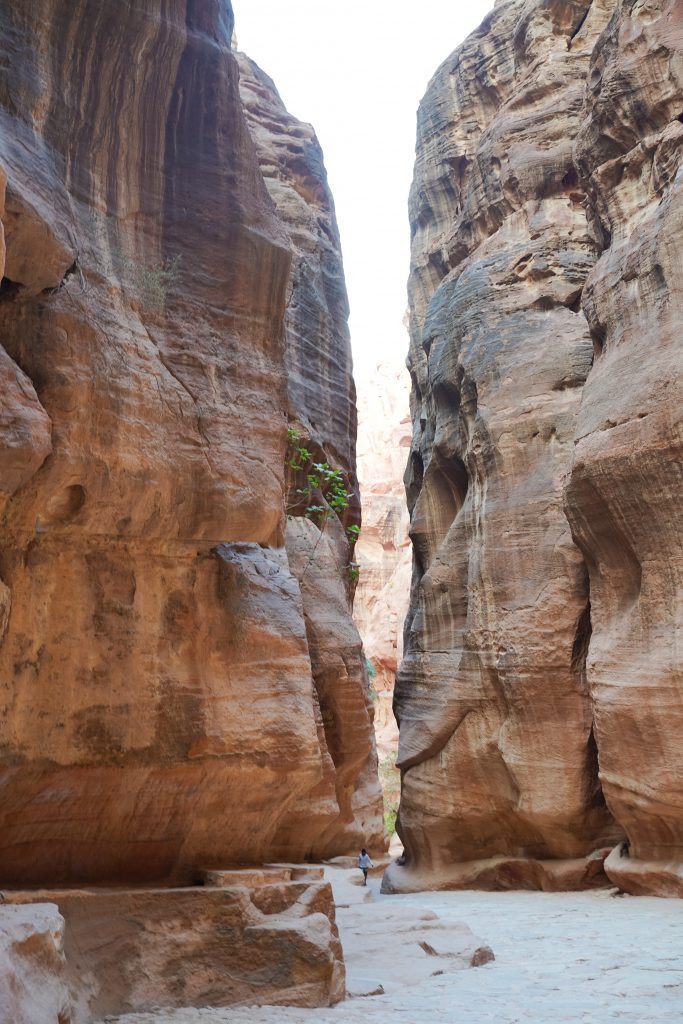
- The iconic Treasury (main trail)– The reason anyone even plans a trip to Petra, this building is just as cool to see in person as the pictures make it seem. There is still some debate on what the purpose of the building was for: whether it was a tomb/ temple, or a place to store goods and information (hence the name). It’s comprised of 2 floors with a 3 chambers on each level and stands at an incredible 128 feet high. While you can’t go in, make sure to wander around and get the many angles as well as peer down at the recently excavated graveyard underneath it.
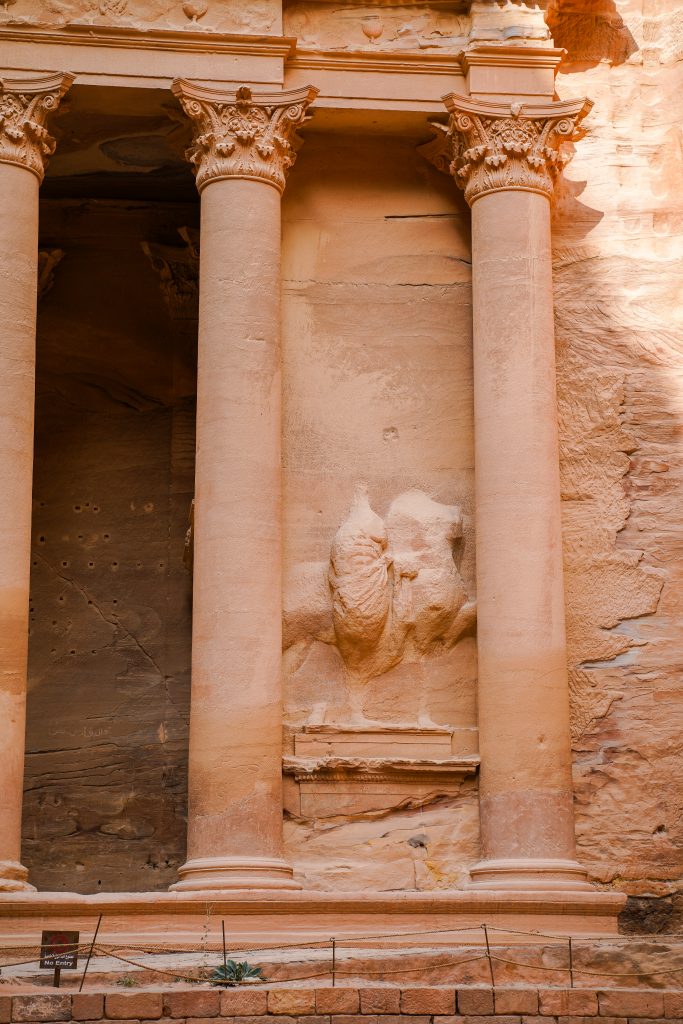
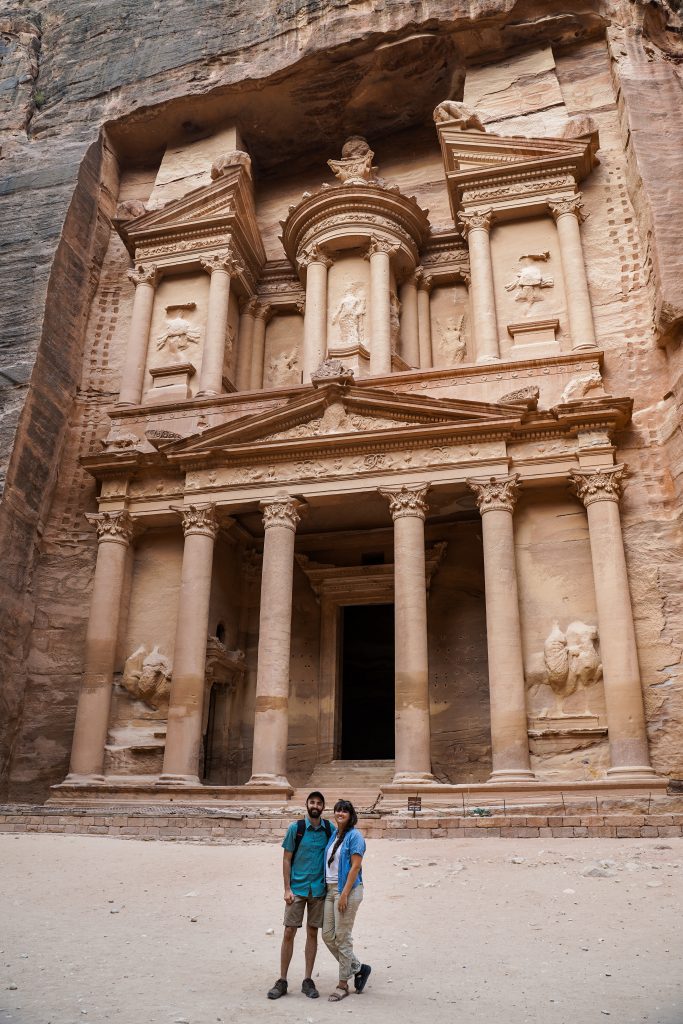
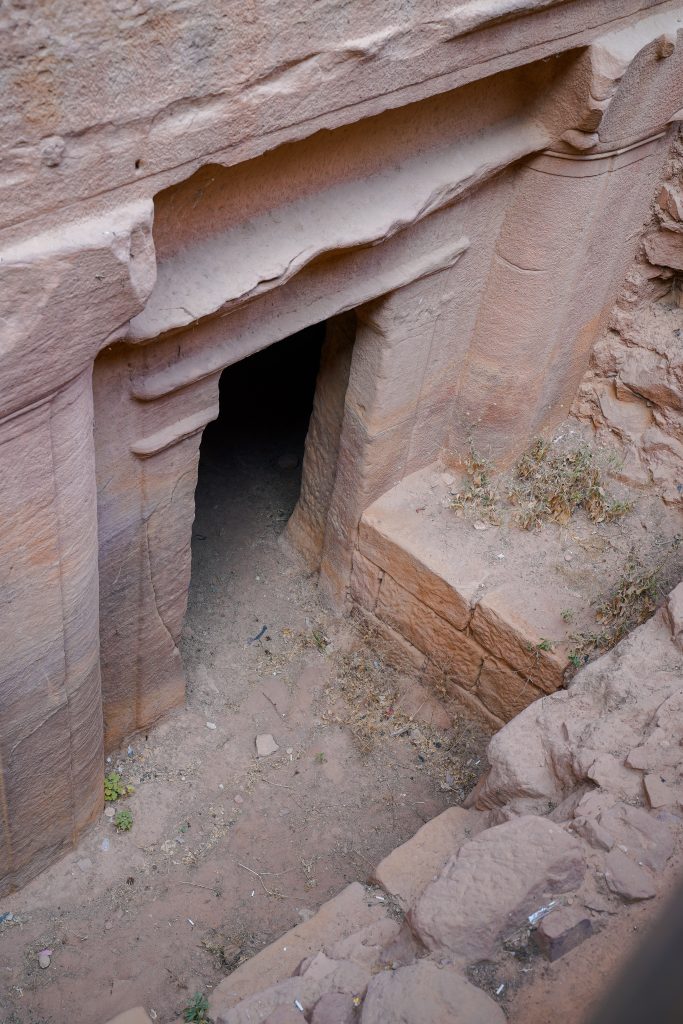

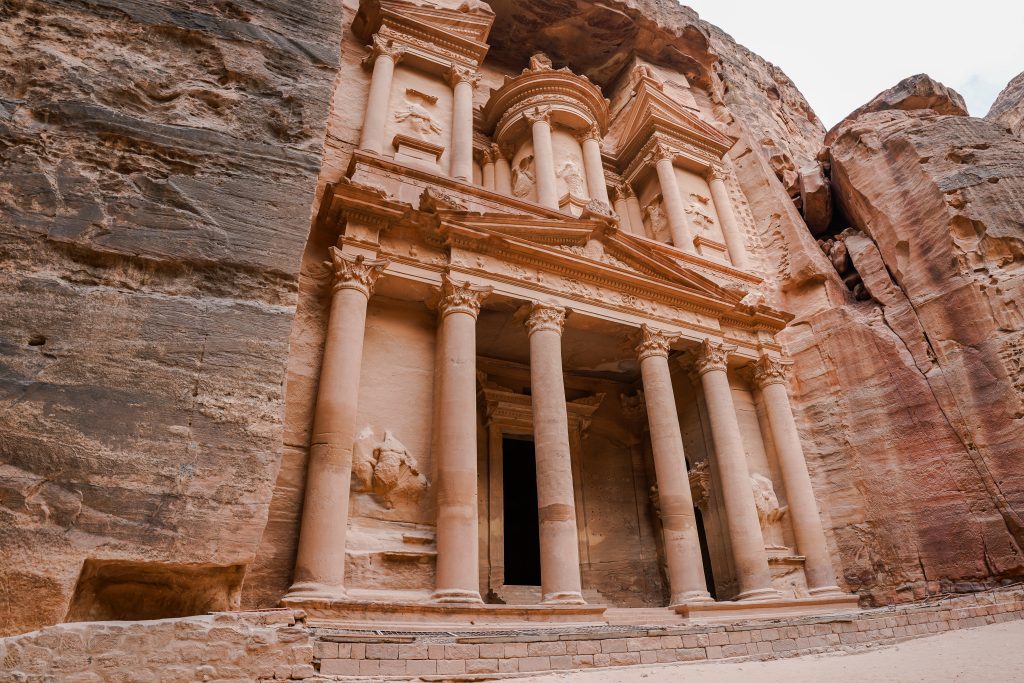
- The street of Facades (main trail) – This street makes up the portion of trail/ canyon you walk through after the Treasury as it opens up onto the town. It has tombs on both sides that were likely used for royal courtiers in the middle of the 1st century AD.
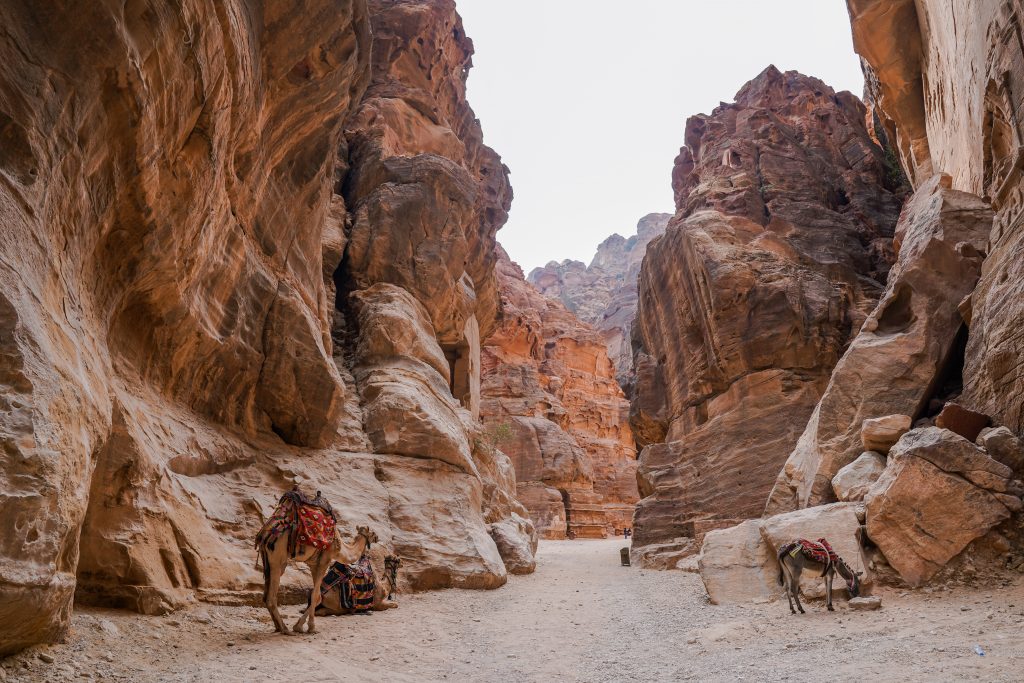
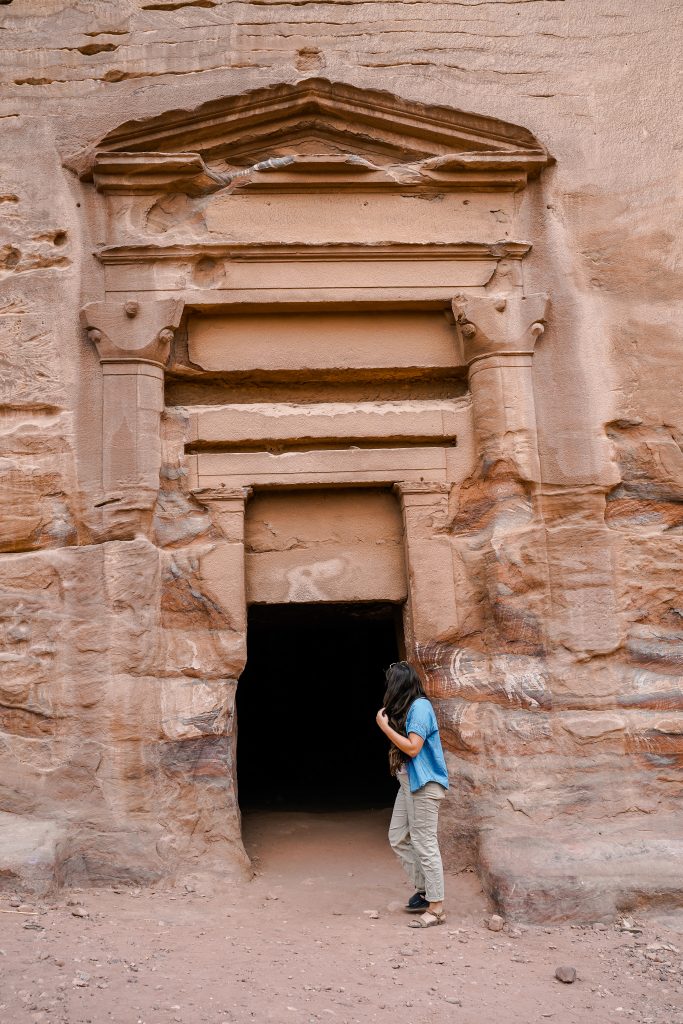
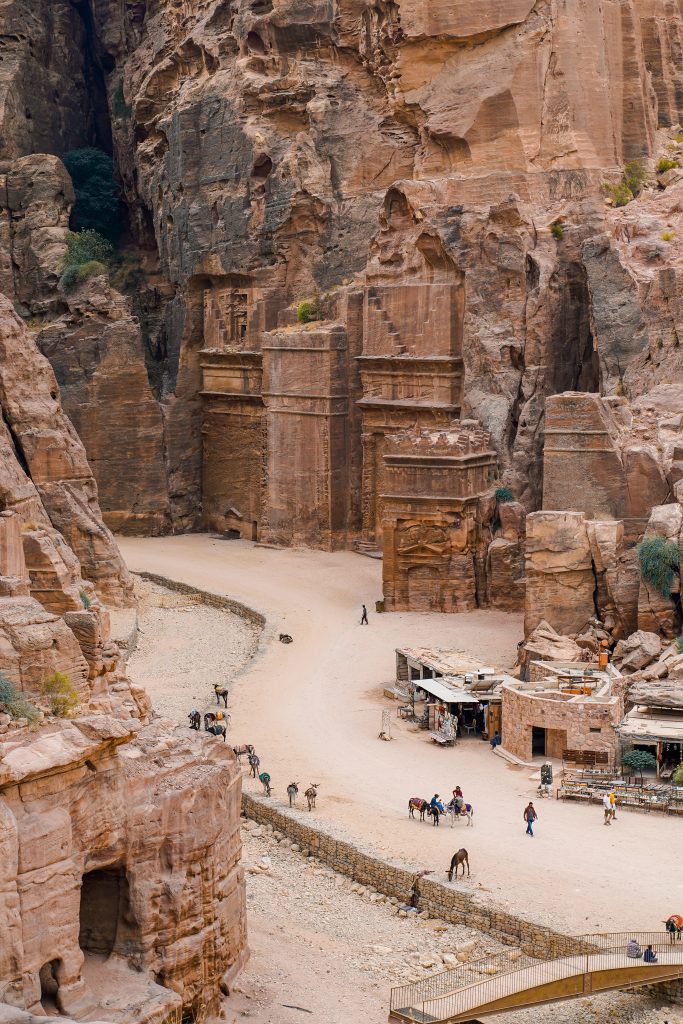
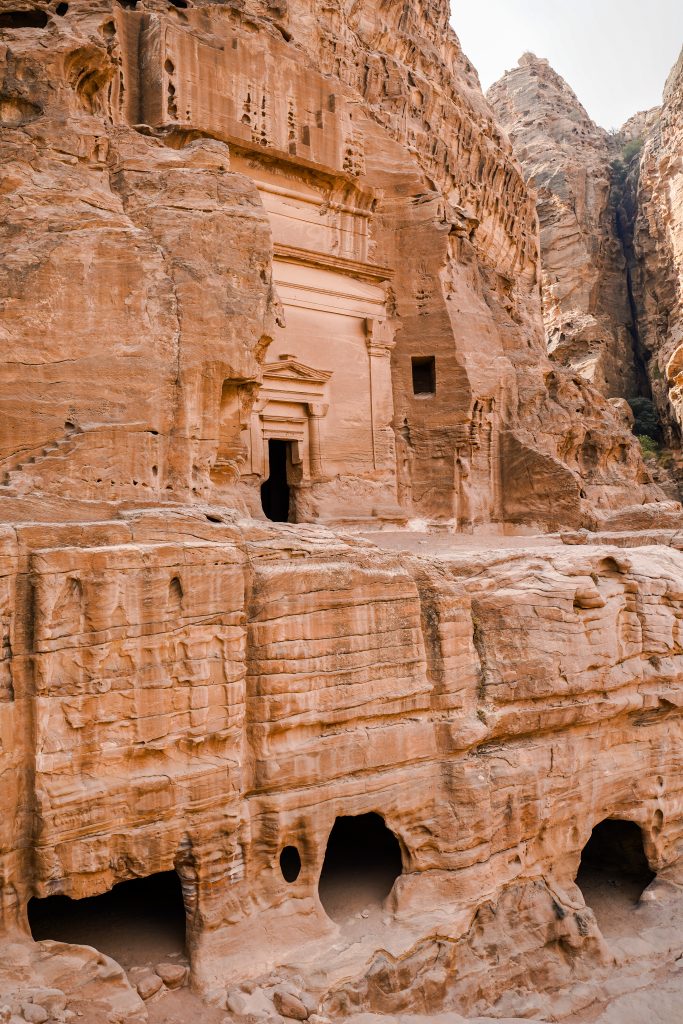
- The theater– What makes this theater so incredibly unique compared to other ancient theaters is that it was CARVED instead of built up. It was carved into the mountainside between 4BC-AD27 and had capacity to sit 4000 spectators.
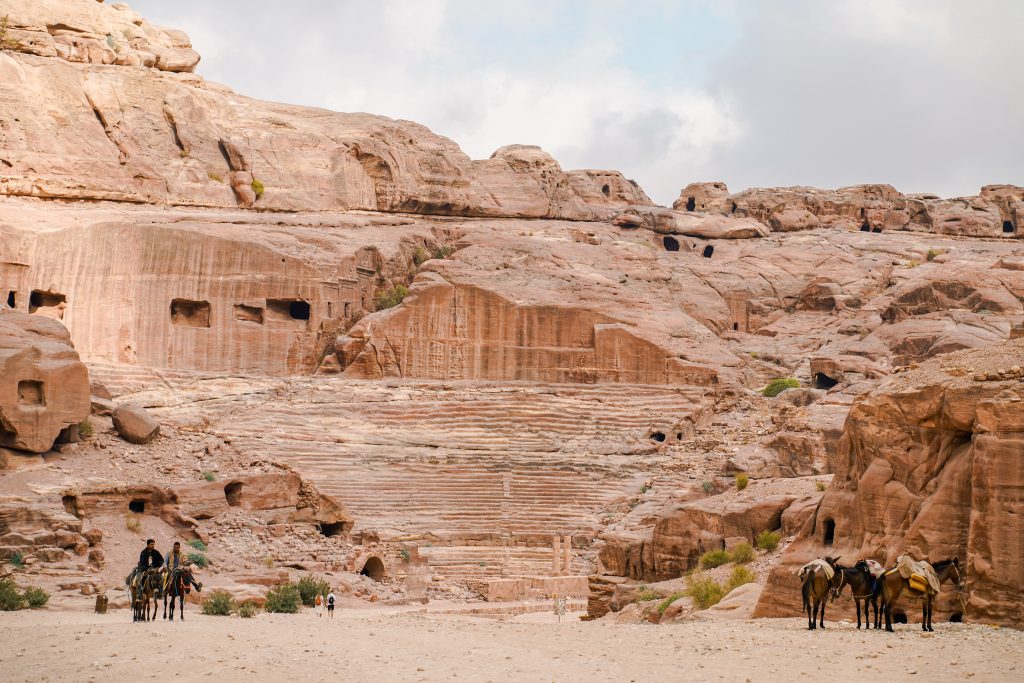
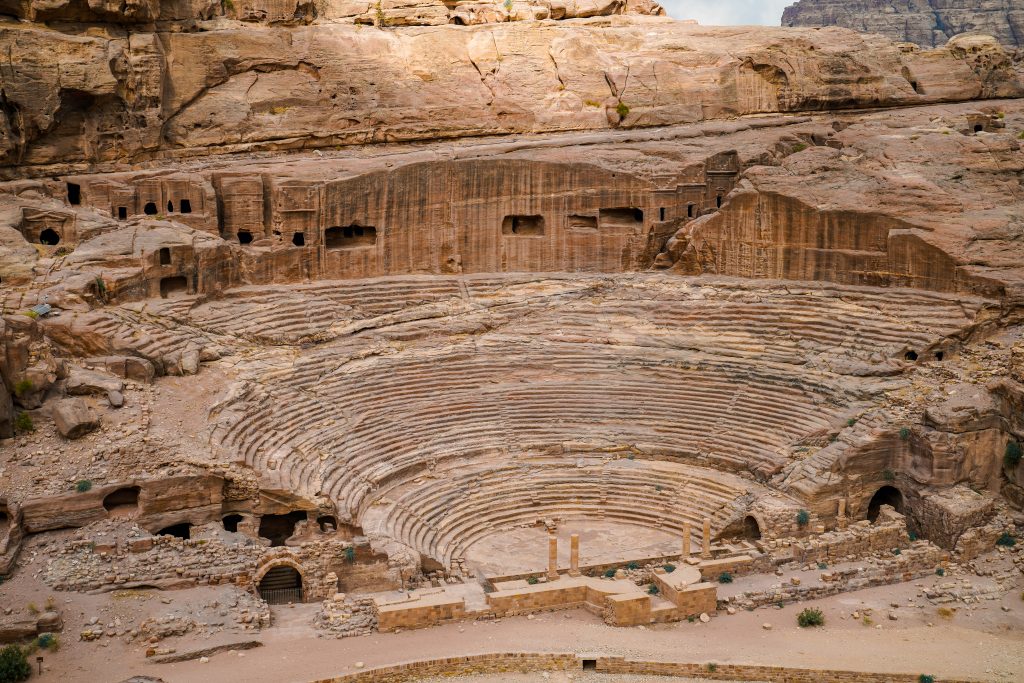
- The Royal Tombs (Al-khubha trail)– Comprised of 4 main tombs that are high up on the right side as you leave the street of Facades. In order (from right to left on the photo below) they are the Urn Tomb, the silk tomb, the Corinthian tomb, and the palace tomb.
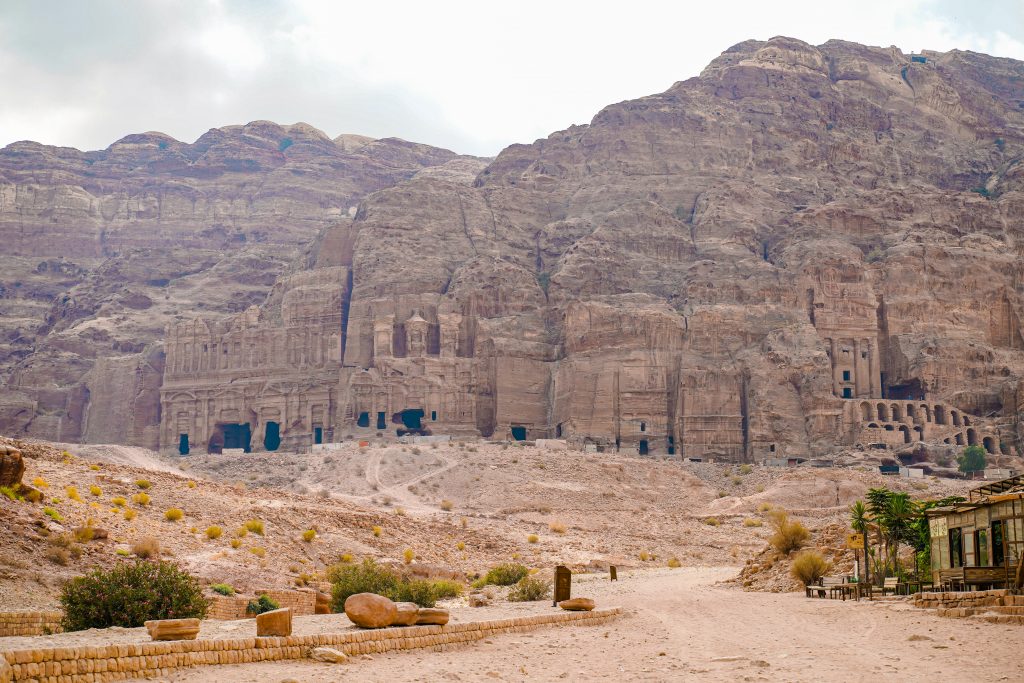
These tombs were estimated to be constructed between 40-70 AD and a few of them were adapted around 446 AD to serve as Byzantine Churches. All were used for burial and their names are derived from unique features of their appearance. These are fun to visit as you can go inside them and explore around. Our favorite was the Urn Tomb with it’s lower section of archways and the upper columned courtyard.
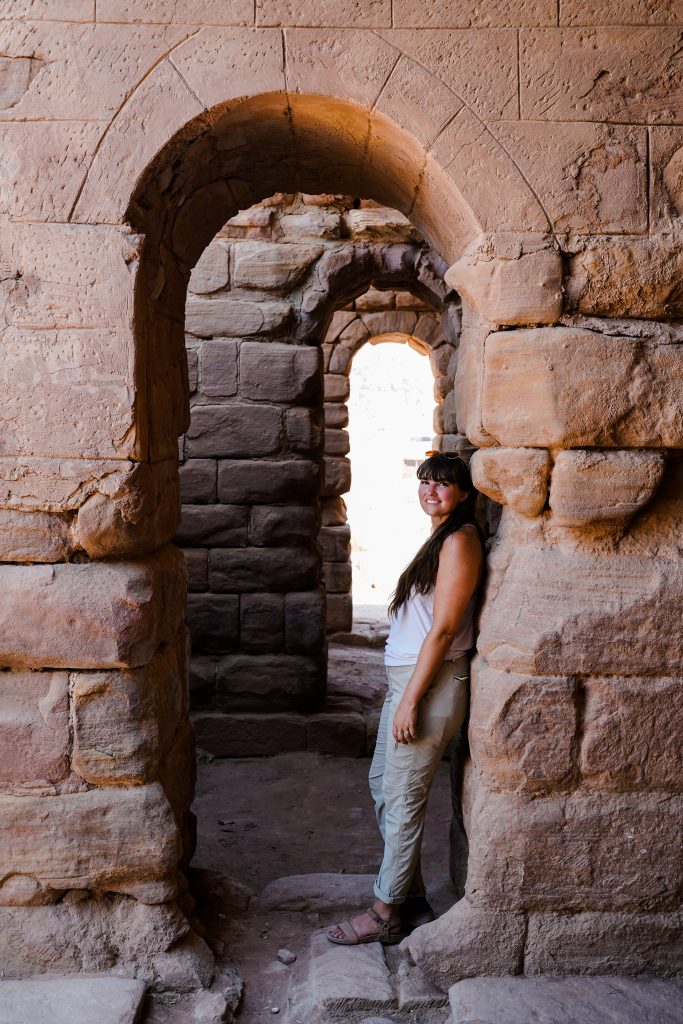
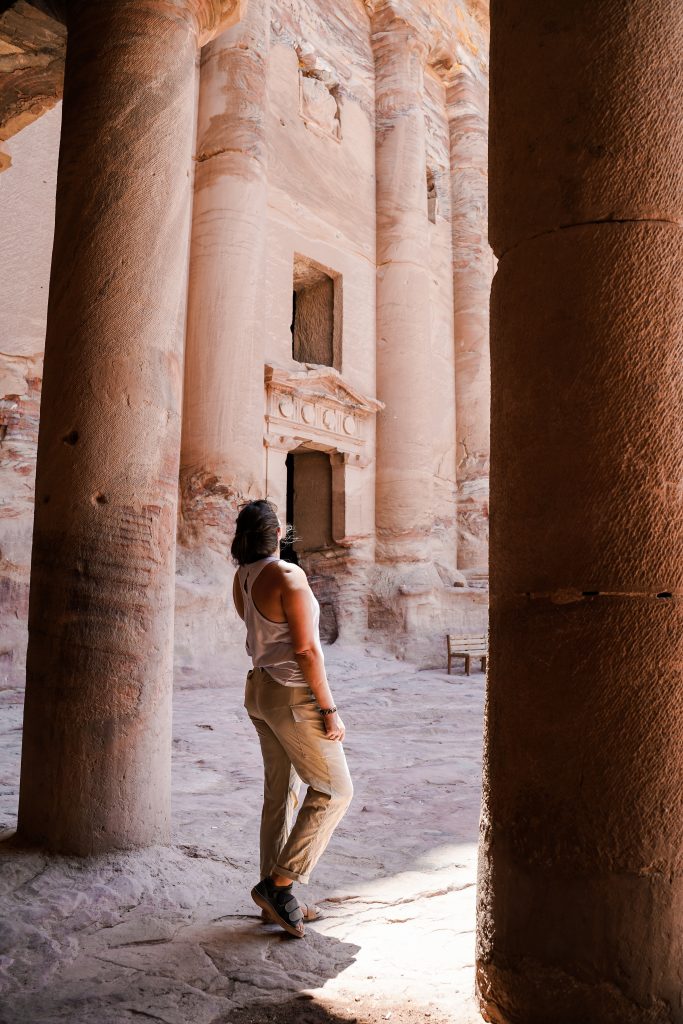
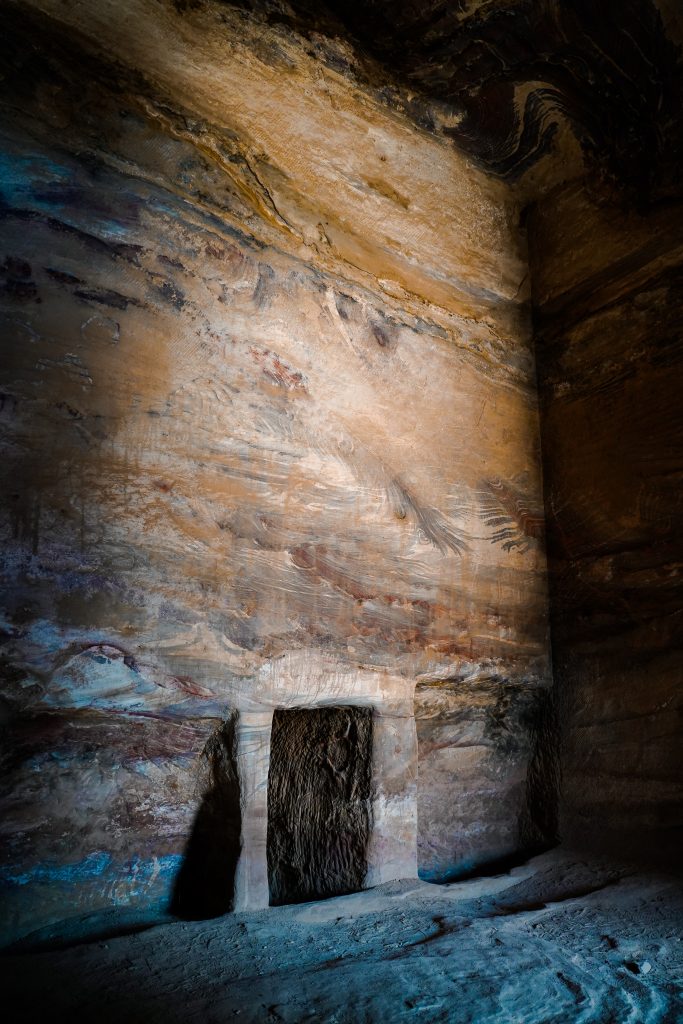
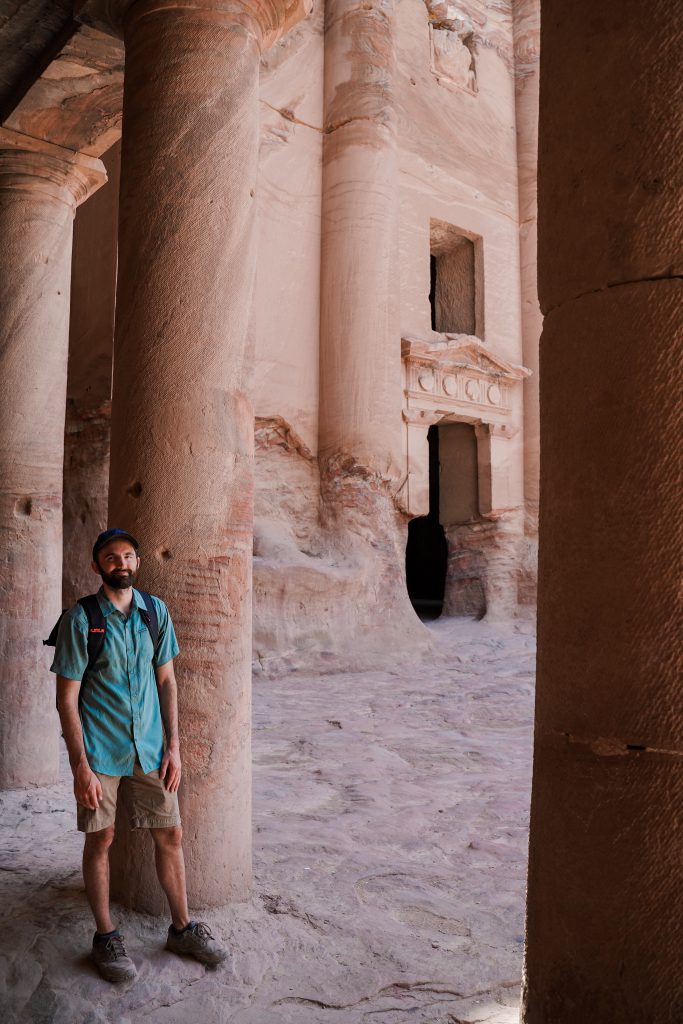
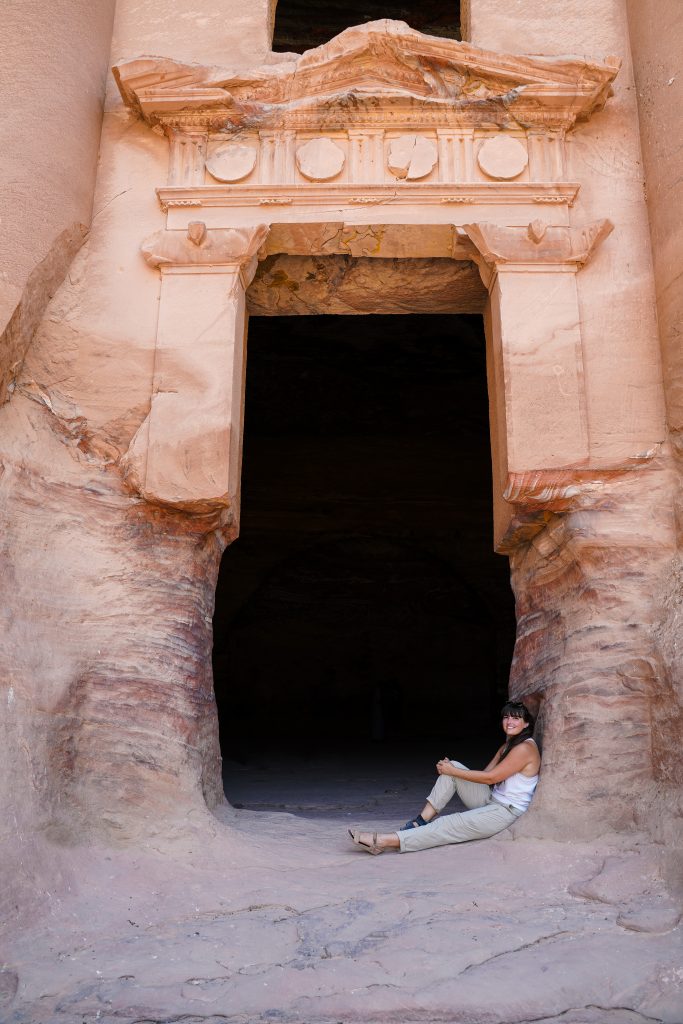
- The Treasury overlook (Al-khubha trail)– Follow this legal and free trail to the viewpoint above the Treasury. There is a Bedouin tent perched right in the prime spot and evidently the tent charges 2-3JD for drinks in order to take photos there. We didn’t hike to this point but the concept doesn’t surprise us. If you plan to hike up here, I recommend having a small bit of cash on hand for the drinks.
- The colonnaded street and Great Temple – The street was an original Nabataean creation that was refurbished (widened) during the Roman occupation. It would have been on of the principal shopping streets in ancient Petra. Excavations around the street indicate courtyard markets, fountains, and small temples used to line the street making it a primary part of the city center. The great temple which sits just beyond the colonnaded street, was colossal in size at an estimated 76,000 sq feet. Some of its columns and pavement were made of white limestone which would have made for a dramatic contrast to the red rock surrounding. The style and quality of the temple indicate it was built at the end of the first century BC and then used to a late point in the Byzantine period.
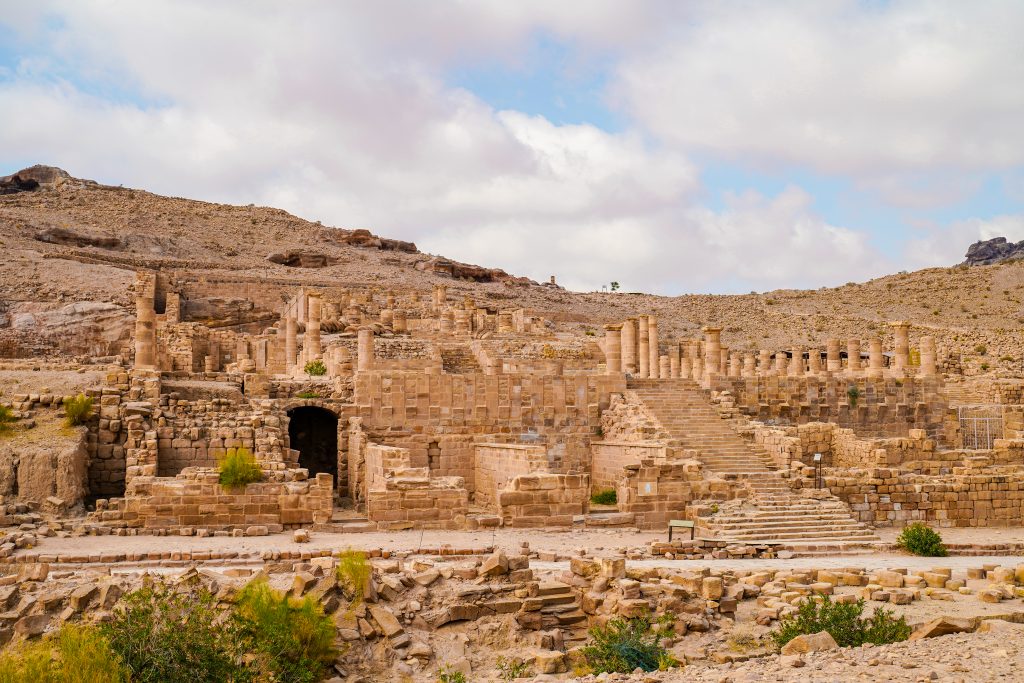
- The Monastery – This is one of the largest monuments in Petra measuring 155 feet (47m) wide and 159 feet (49m) high. It was built with niches to house sculptures and the interior is occupied by 2 side benches and an altar on the rear wall. It dates to the early 2nd century AD and would have been used for religious meetings.
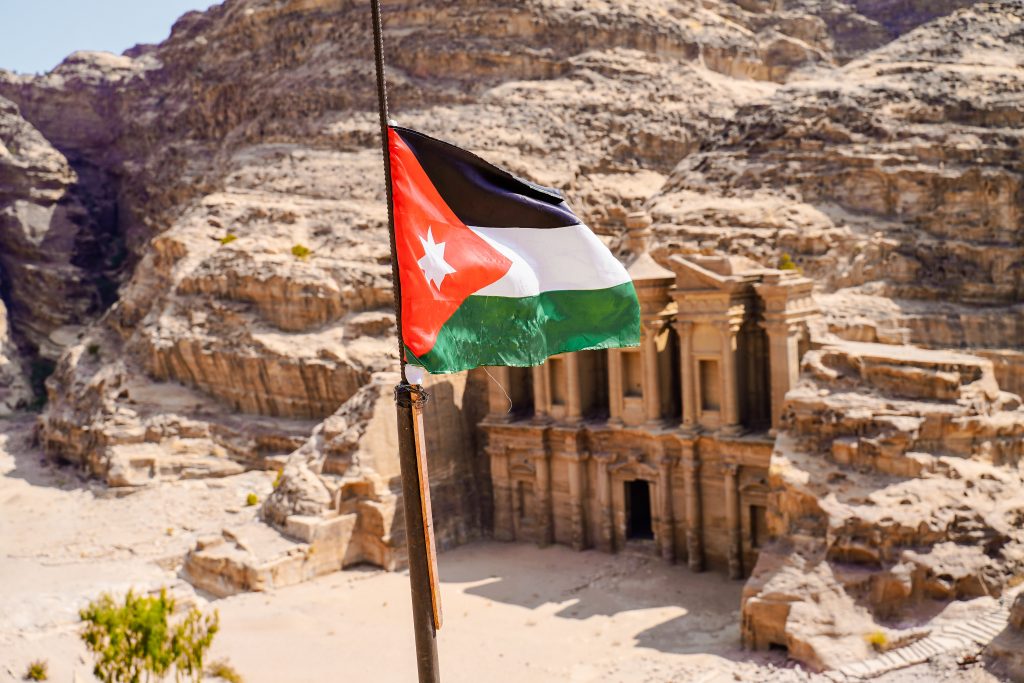
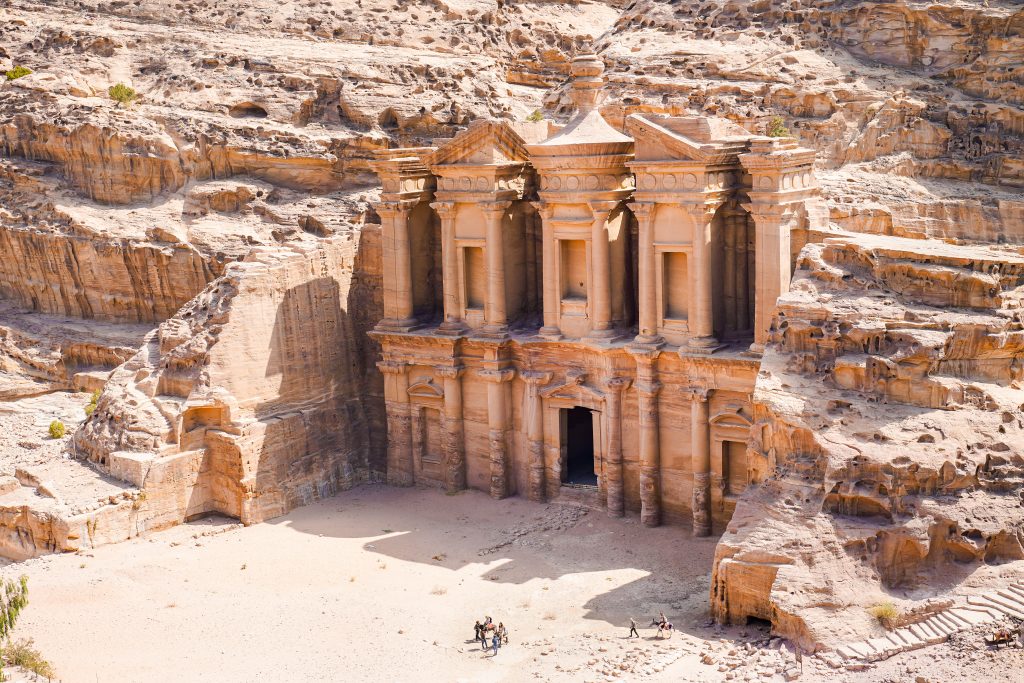
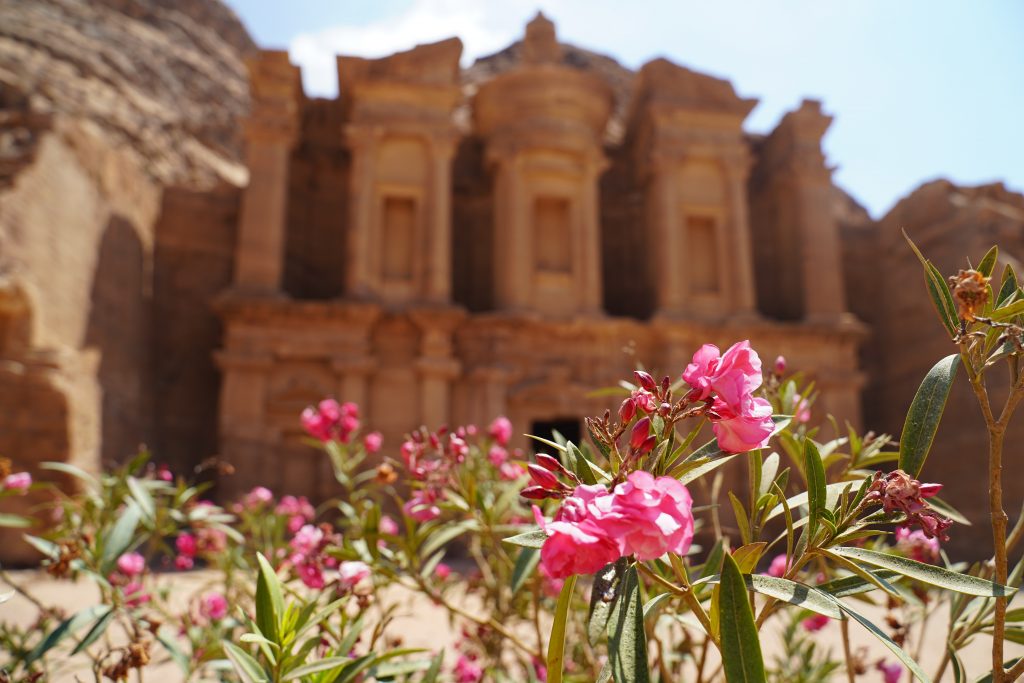
- The High Place of Sacrifice (Wadi Farasah Trail)– It is a steep half- hour climb from the theater to the high place of sacrifice which sits on the summit of the Attuf Ridge. The paths and stairs were part of the original processional way used by the Nabataean community. At the top, note the 2 obelisks standing 30 m apart in east/west alignment likely representing the 2 most important gods of the time. The high place of sacrifice is one of the best preserved of such sacred places and also provides a great view of the city center.
- The Garden Tomb (Wadi Farasah Trail) – Continuing past the high place of sacrifice and through the obelisks- follow the trail past more facades and tombs as it leads back down into the main parts of the town (see below on the map, it is the yellow trail)
*This is not a comprehensive list but it is the MAIN sites that you will see on the given trails. Unless you are incredibly fit, there’s no way to squeeze all of these into one day. It is recommended to visit for two days if you wish to visit them all.

Trail Descriptions:
The main trail:
This trail travels from the main entrance to the start of the Ad-Deir (Monastery) trail. It is 2.5 miles each way and is relatively level- easy walking. (designated in red)
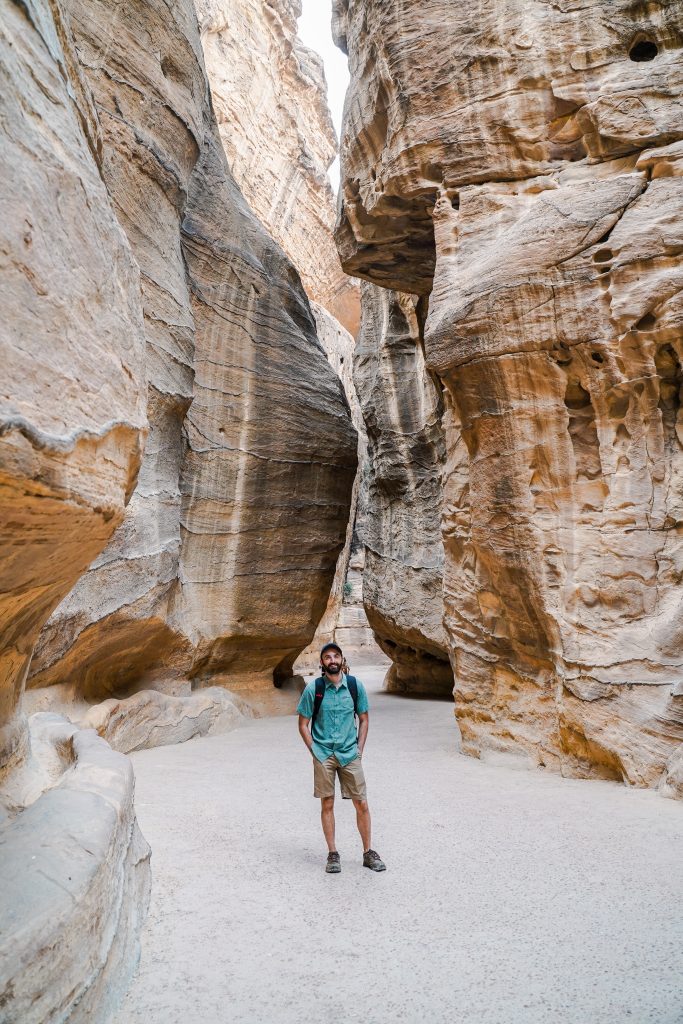
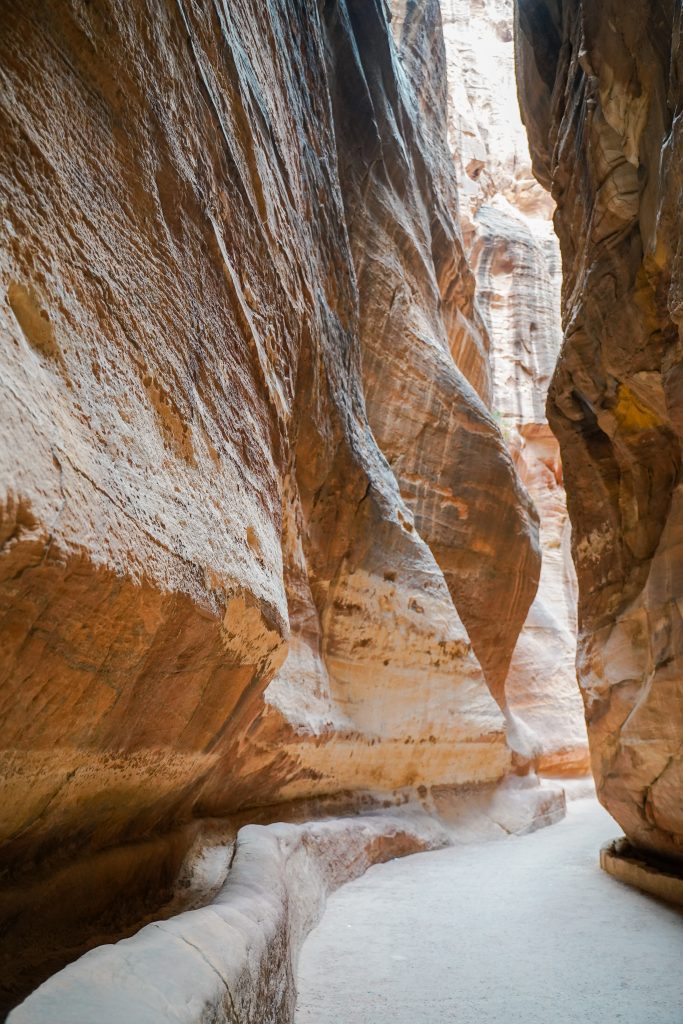
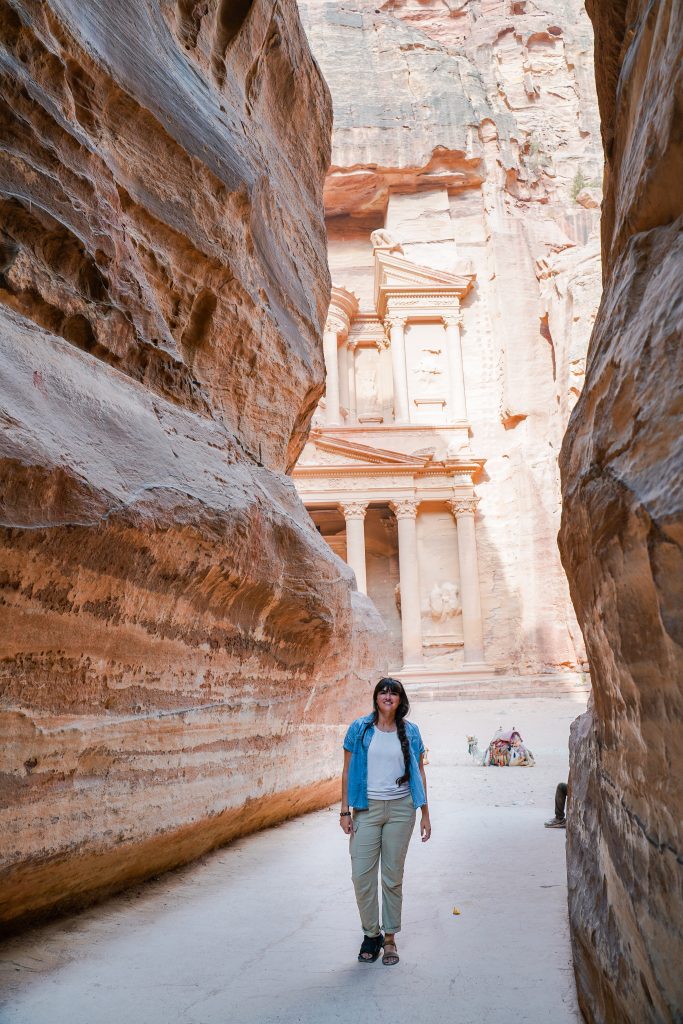
The Al-Khubha trail:
This trail branches off the main trail at the Royal Tombs and ascends up to a great overlook of the Treasury. It is a STEEP and exposed (so hot) climb rated as difficult. It will add 2.2 miles RT to your day if you go all the way to the overlook. (It is worth it to go on this trail at least to visit the Royal Tombs which is not a hard or long climb at all) (designated in green)
The Wadi Farasah trail:
Take this trail to escape the crowds and see the High place of Sacrifice, Garden Tomb, Tomb of the Royal Soldier, and more. It is 1.9 miles from the theater to the city center and will will skip parts of the main trail that you can see on your hike out. (designated in yellow)
The Ad-Deir (Monastery) trail:
This trail will add 1.6 miles RT to the main trail and is rated as difficult. It climbs over 800 steps but is absolutely worth the effort as the Monastery rivals the Treasury in terms of beauty and scale. (It’s also a lot less crowded) (designated in pink)
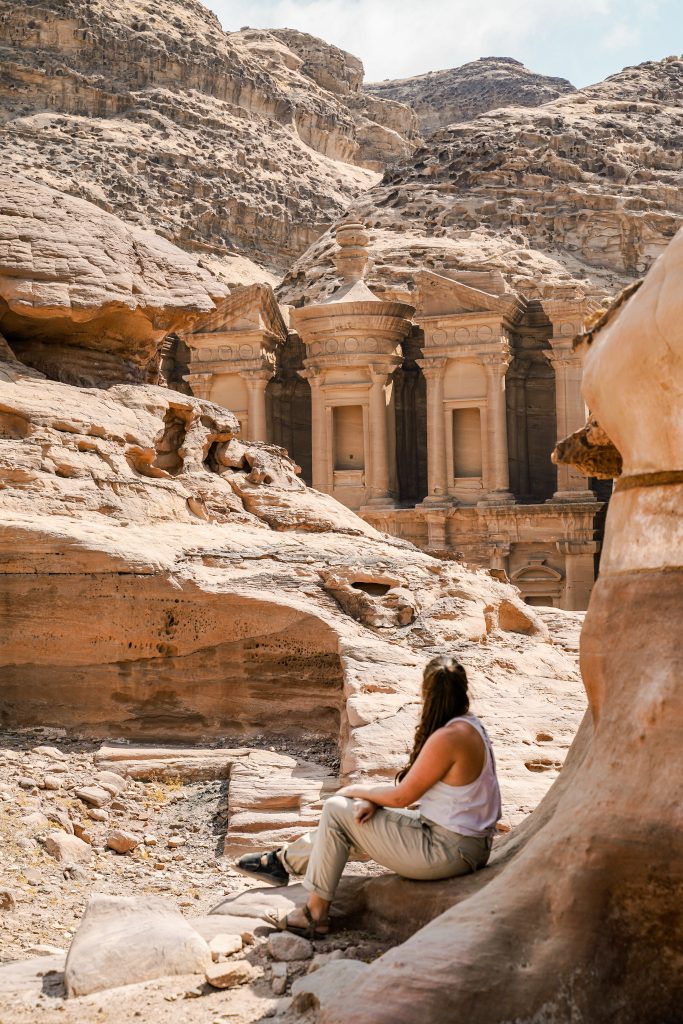
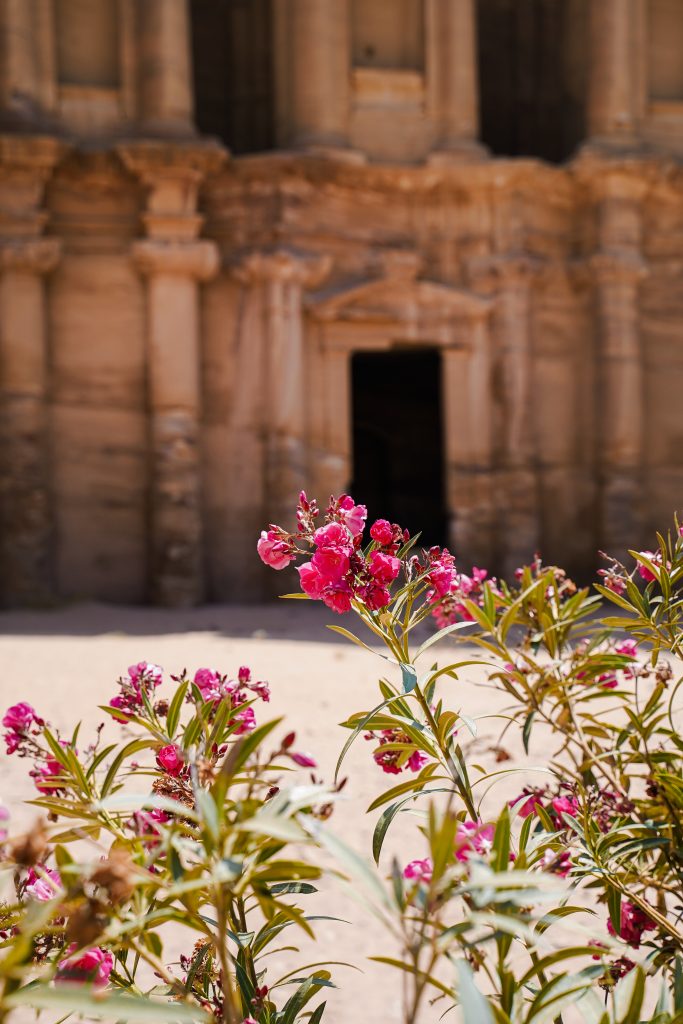
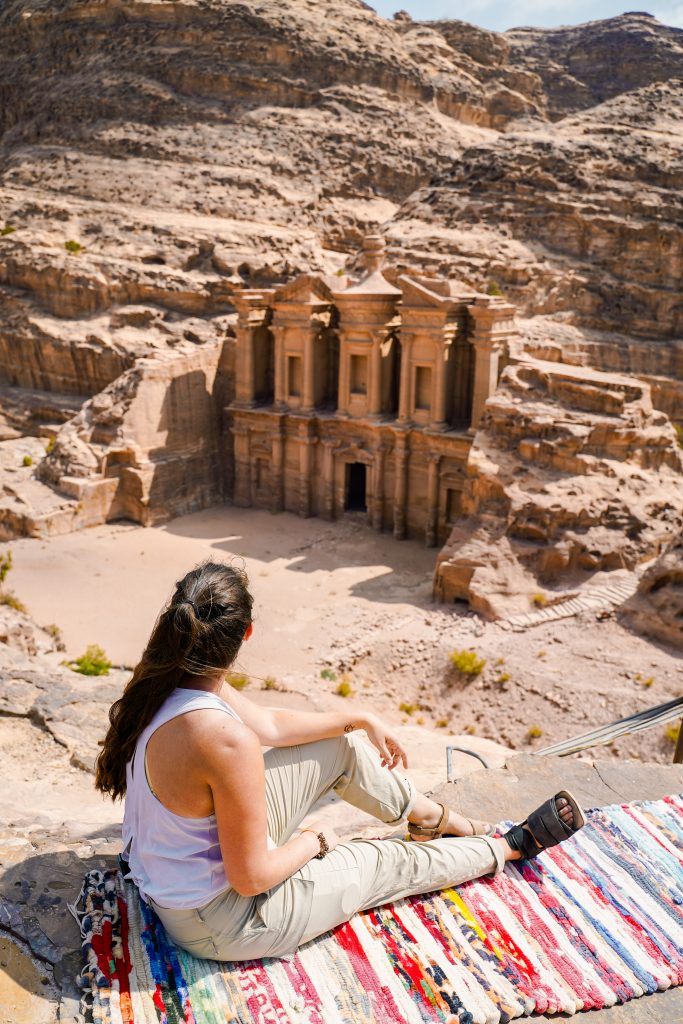
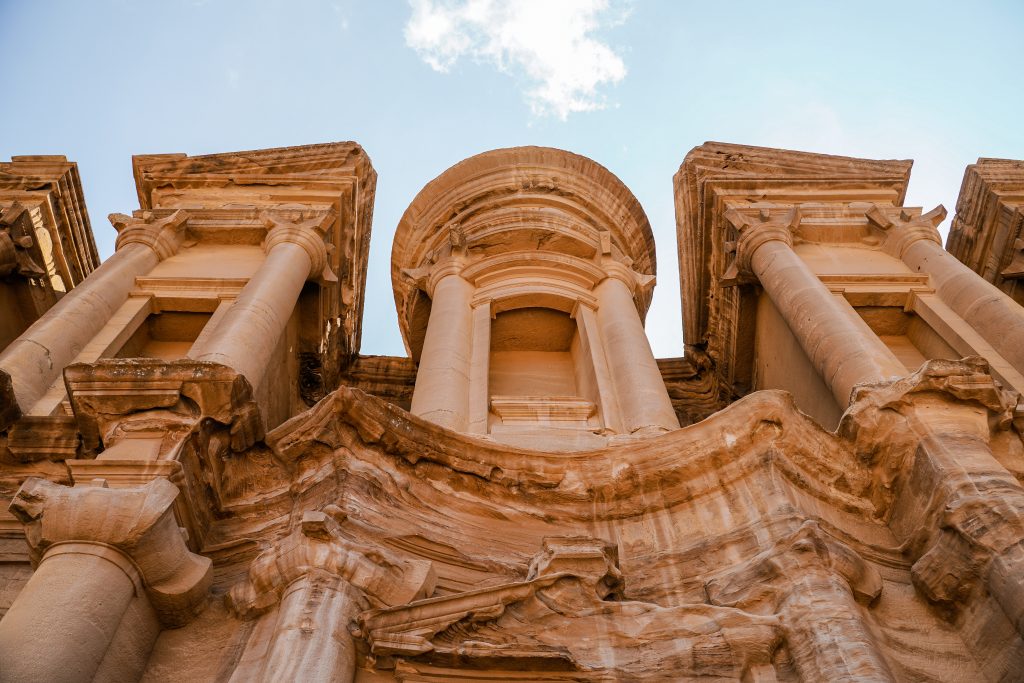
My Recommended trail route if you only have one day:
Follow the main trail with a short branch to visit the royal Tombs first. (2.5 miles + maybe 1 mile to see the Royal Tombs) Skip the Treasury overlook to preserve your strength and return to the main trail past the colonnaded street and city center. Take the Monastery trail up to the top and then back down. (1.6 miles) Then follow the Wadi Farasah Trail from the main palace up to the high place of sacrifice and then down which will take you to the theater back near the Treasury) (1.9 miles) Follow the main trail out from the theater (about 1.5 miles) back to the entrance.
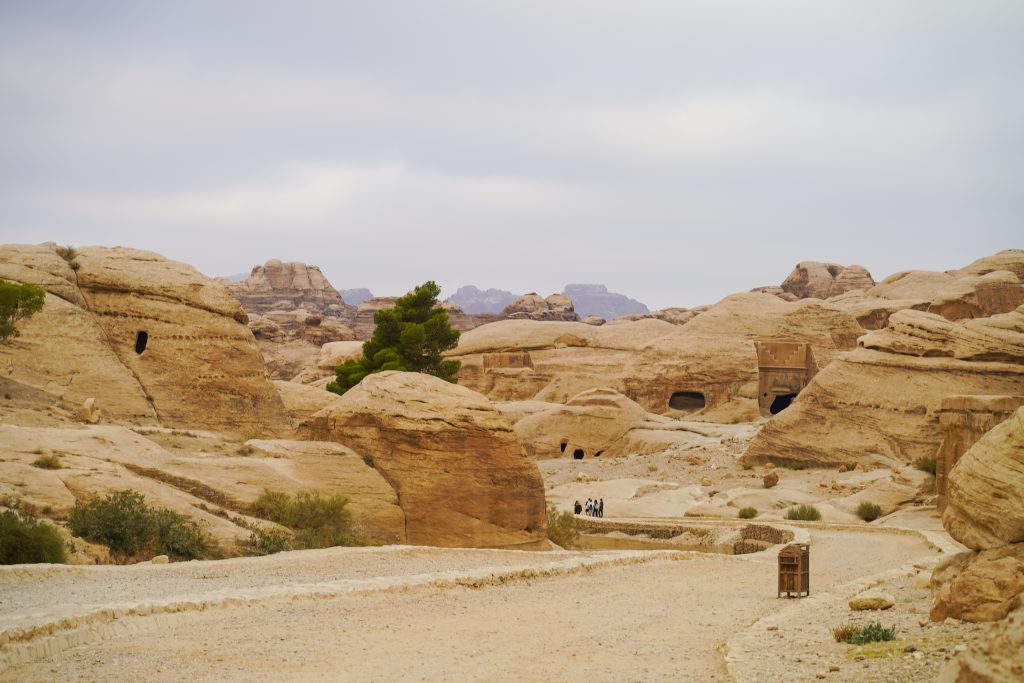
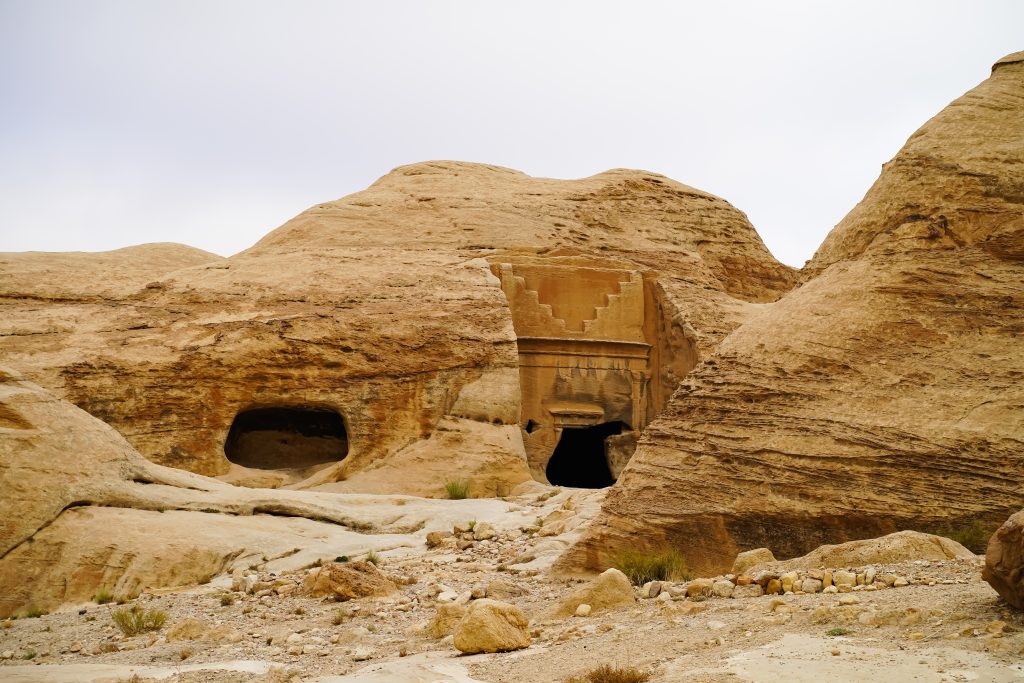
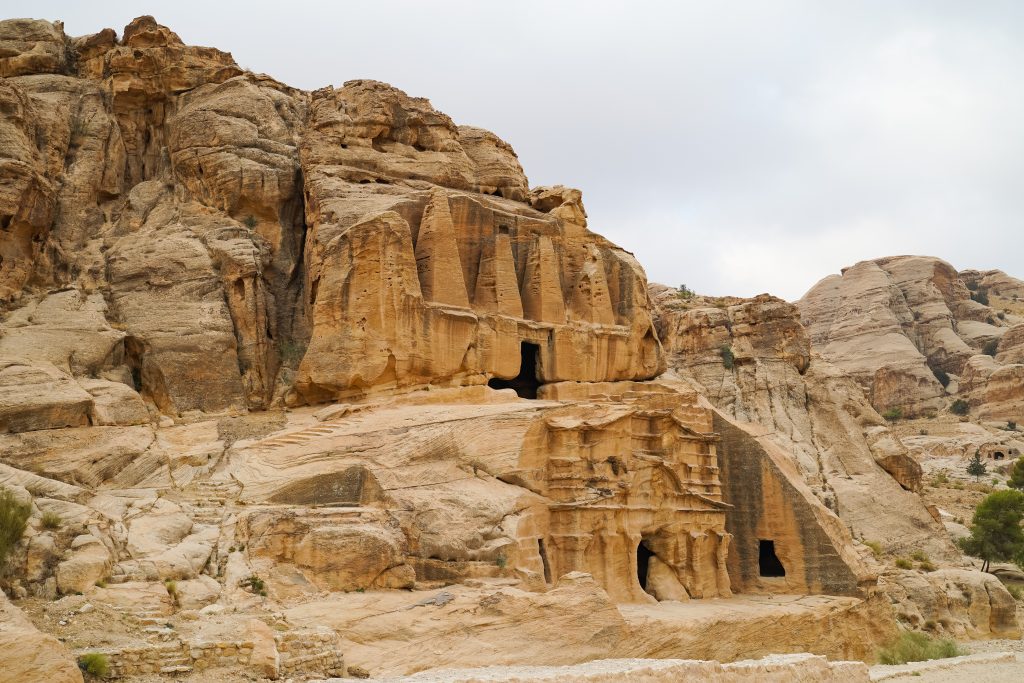
This route hits the most major archeological points and will likely work with a guide for the first potion if you’ve hired one. It also ascends the Wadi Farasah trail more leisurely but then will be harder going down.
You could do this in reverse although I would hit the Monastery climb as early as possible since it is a longer/ harder ascent than the high place of sacrifice.
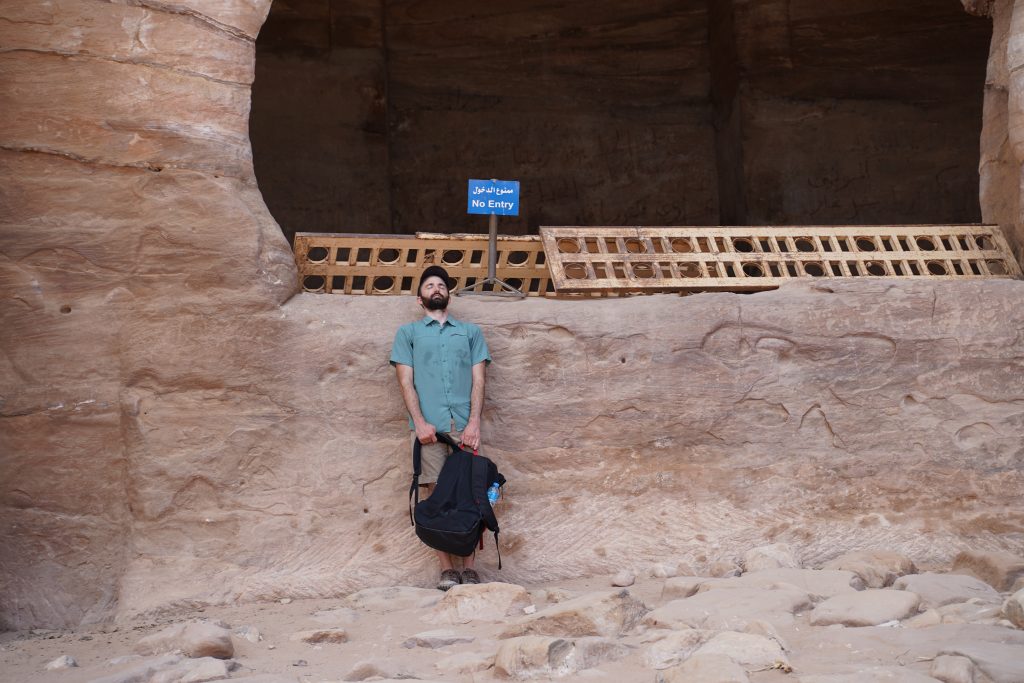
*Unfortunately, since I had broken my foot 2 days before we left on our trip and I was still in a boot, we had to scratch off the options of the Wadi Farasah Trail and the Treasury overlook. That being said, we still did around 8 miles that day.
A Brief history of Petra
Petra, known as the “ Red Rose City” because of the color of stone, was settled and developed by the Nabataeans. These people were an Arab tribe who first appeared in the 6th century BC. Their culture was initially similar to other Arab tribes in that they had little interest in agriculture but were nomadic and lived in tents. By the 2nd century BC they developed into an organized society in the area where they quickly grew in power and wealth.
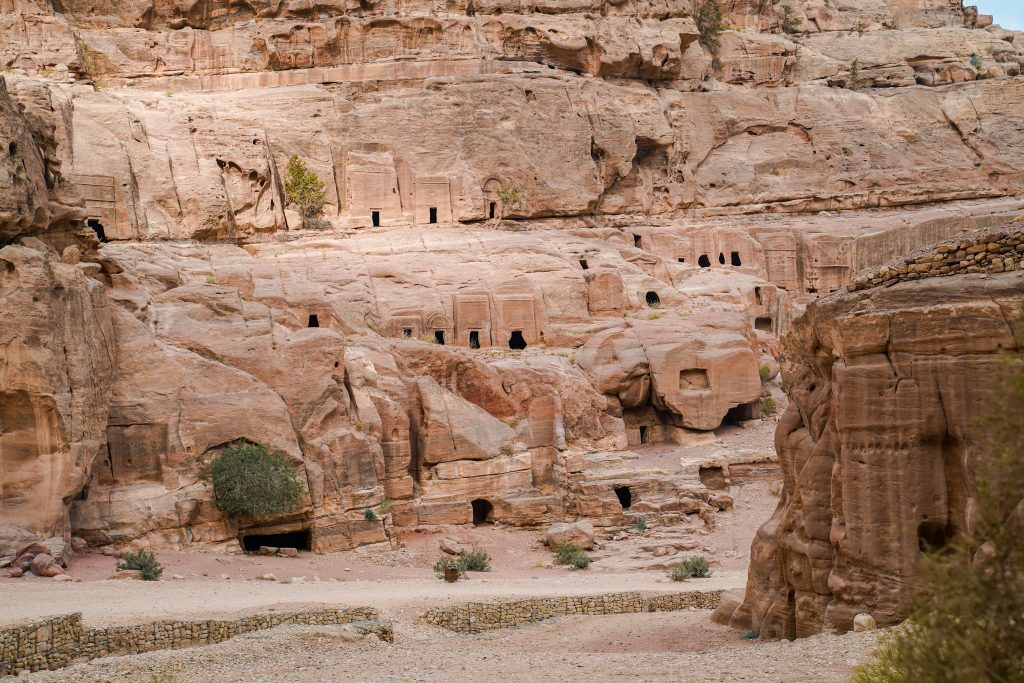
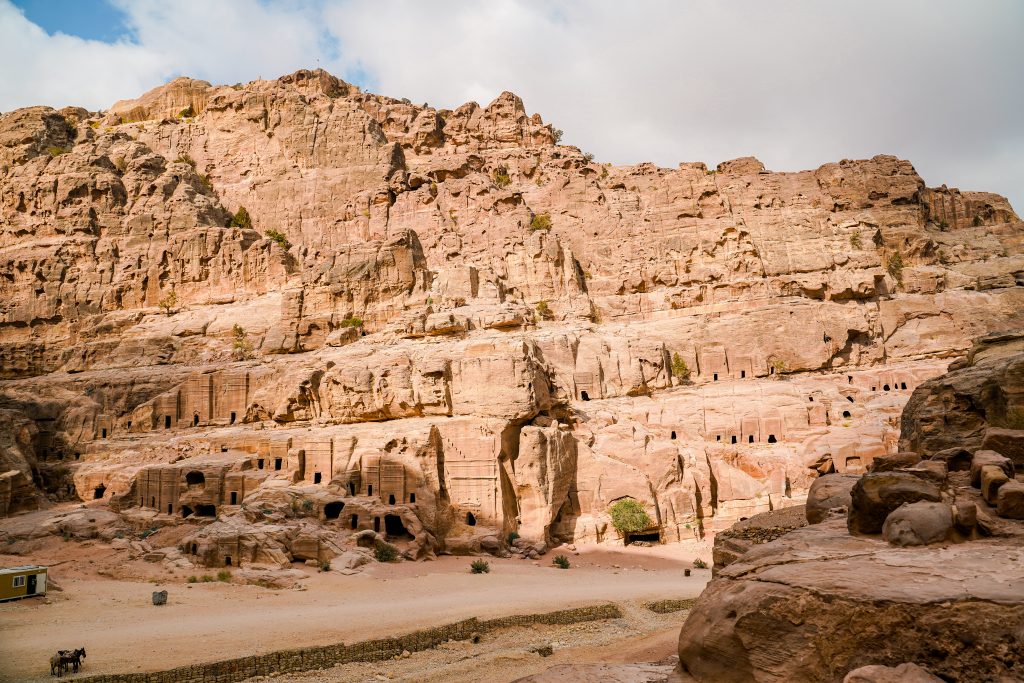
Many armies from the Seleucids and Ptolemies warred for control over Jordan however the Nabataeans remained mostly untouched and independent throughout. They resisted military conquest but were greatly influenced by the Hellenistic (Greek) culture of their neighbors. Many of these influences are easily visible in art and architecture throughout Petra.
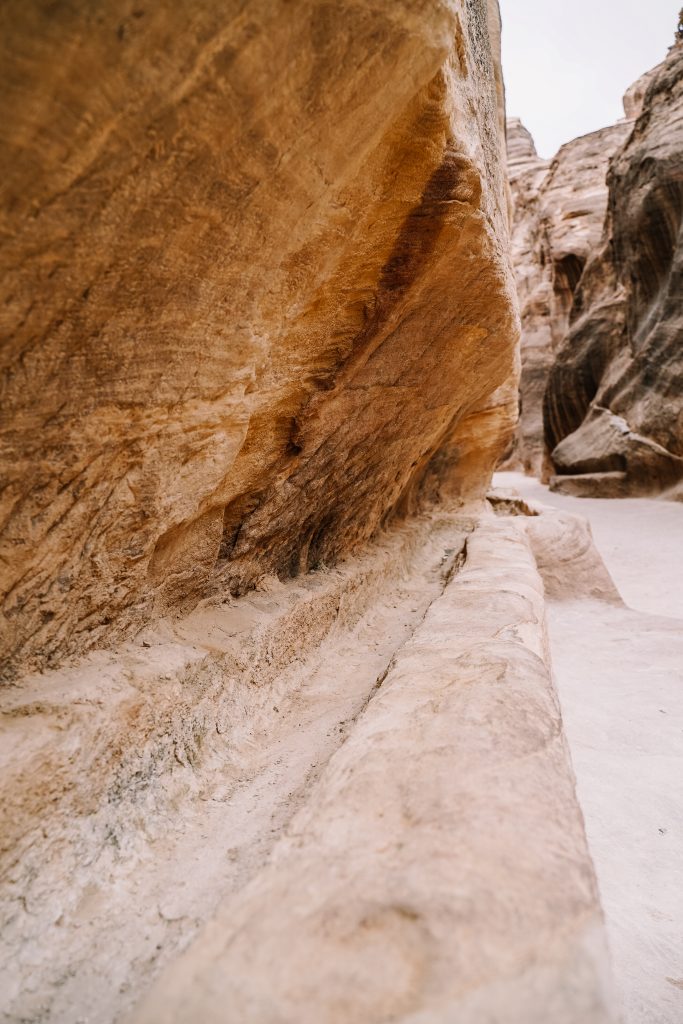
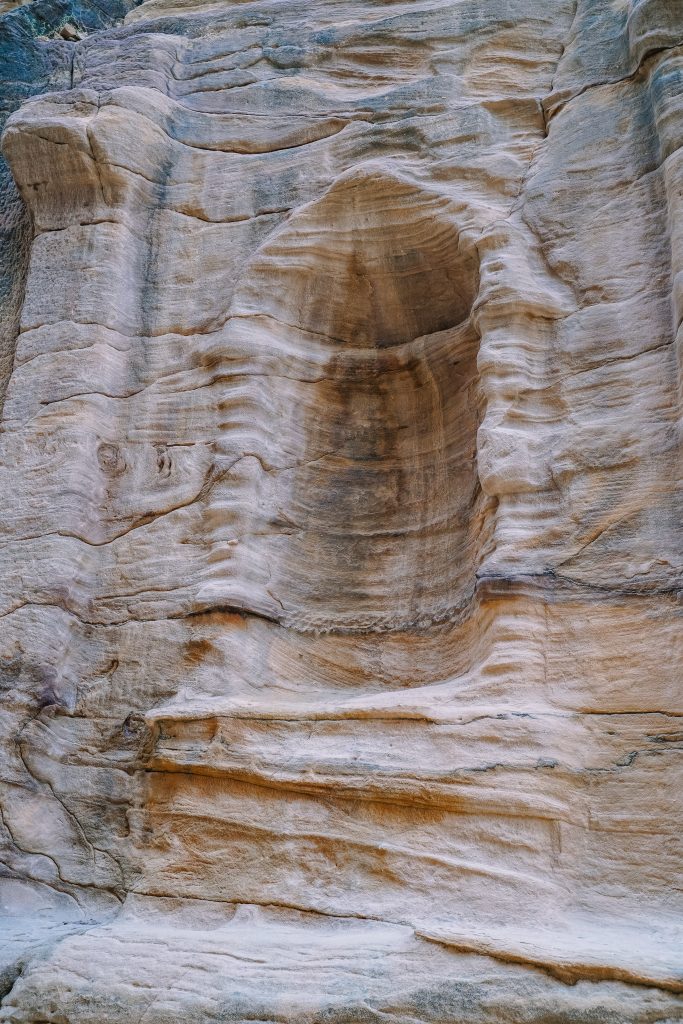
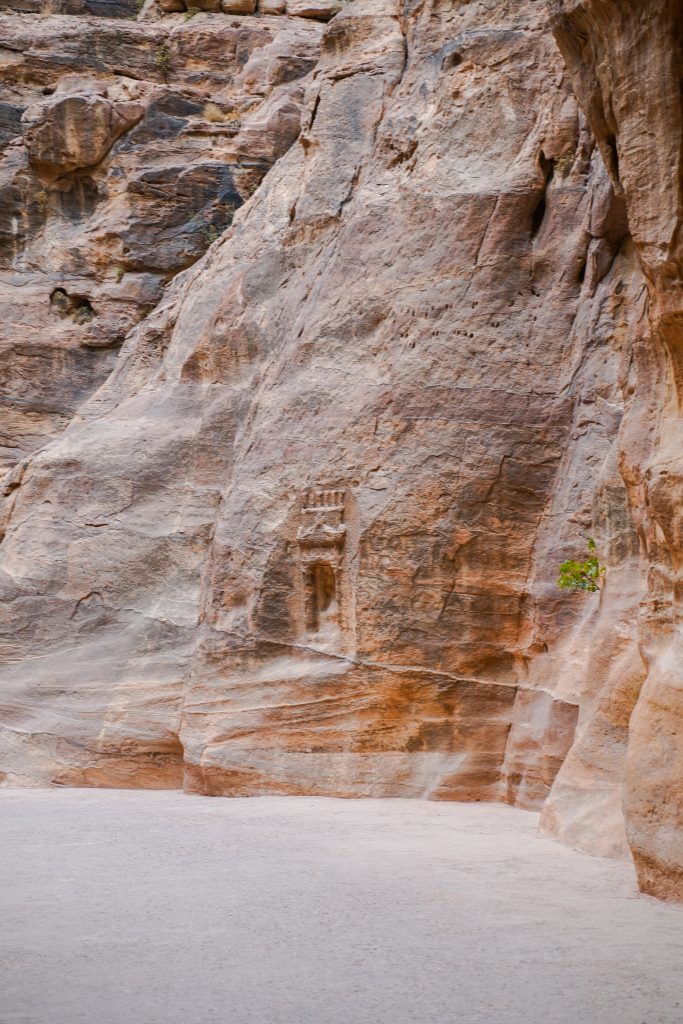
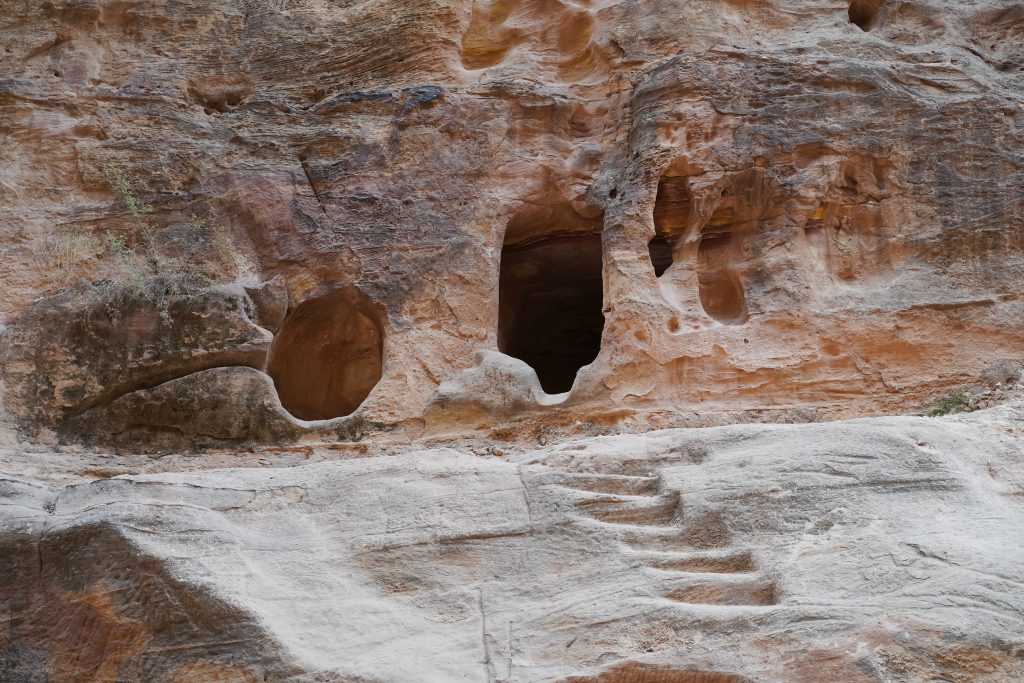

When Rome took control of Jordan’s northern territories (Jerash) and Syria, they had many military engagements with the Nabataean people until finally from 70-106 AD the Romans claimed the kingdom and renamed it Arabia Petrea. At this time the city of Petra was redesigned according to traditional Roman designs (most easily seen with the palace and colonnaded street area.) Under Roman rule, the city flourished and grew with an estimated 20,000-30,000 people living in Petra during its peak.

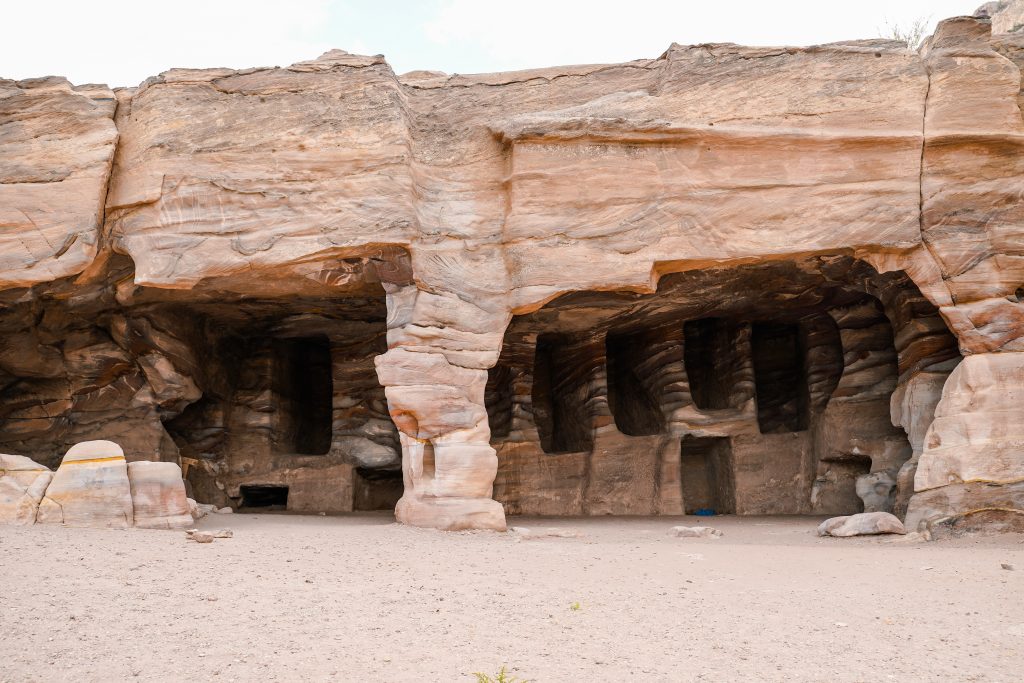
As commerce shifted to trade routes in Syria or expanded to seaborn trade around the Arabian Peninsula, the city of Petra declined. Eventually the Nabataeans left their capital although no one really knows exactly why. The few silver coins or valuable possessions unearthed in Petra indicate it was an methodical move away from the city.
About our visit:
We had 2 nights in Petra town which is the absolute best way to visit Petra. Because we were there in the “low” season and COVID we actually met our guide about 1 hour after opening at 7AM to sleep in a little more. We were at the Petra Guest House hotel right outside the main gate so we walked right in from there.
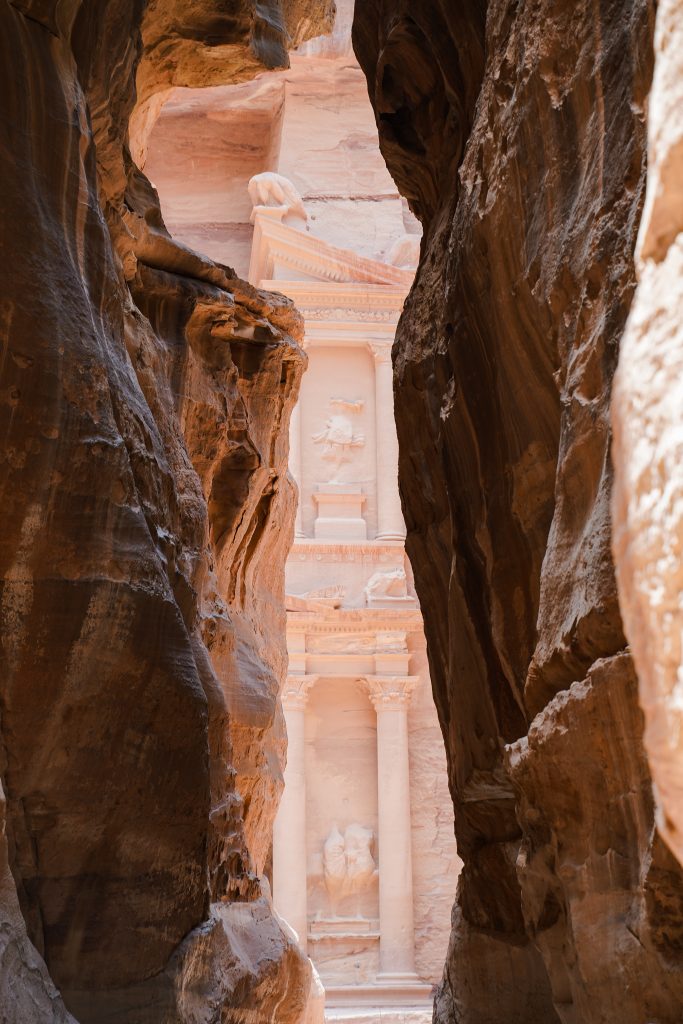
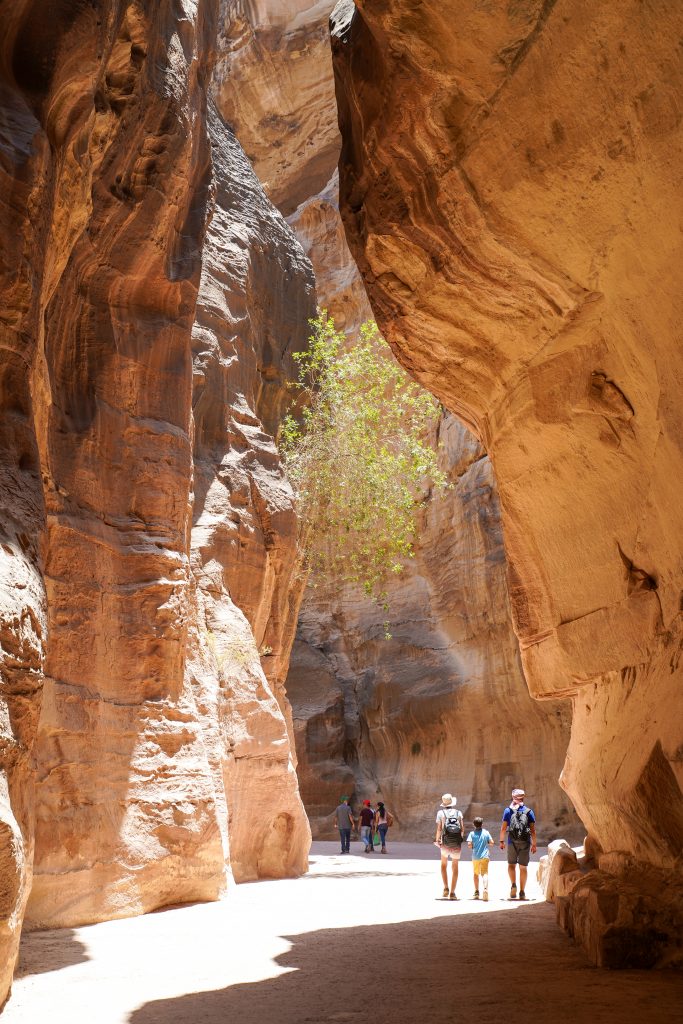
For the first 1.5 hours or so we walked with our guide as he told us the history of the site, about the culture of the people (then and now) and pointed out very interesting structures so eroded by time we maybe would have missed them. Being from the land of many reservoirs and drought, I found the dam they built and water canals in the slot canyon one of the most interesting inventions.
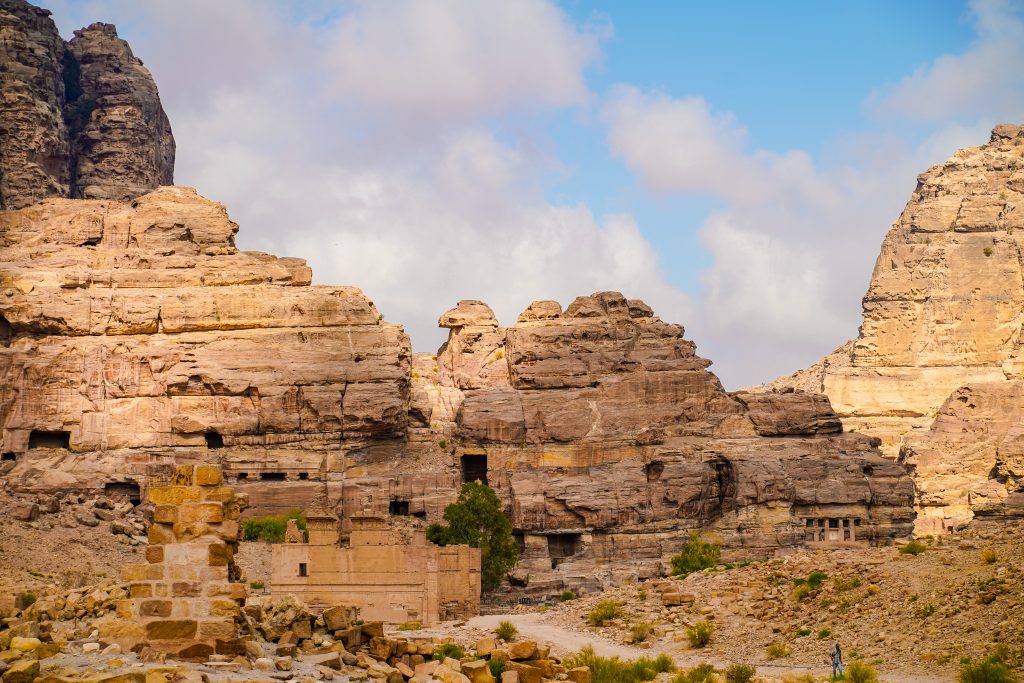
After we took our time taking pictures at the Treasury and exploring around there (since it would get busier later) our guide lead us to some pretty cool cave houses around the street of Facades that weren’t called out on the map and walked with us to the colonnaded street where he told us about the rest of the trails. We definitely enjoyed having a guide so I’d recommend hiring one to walk with you at least through to the Treasury.
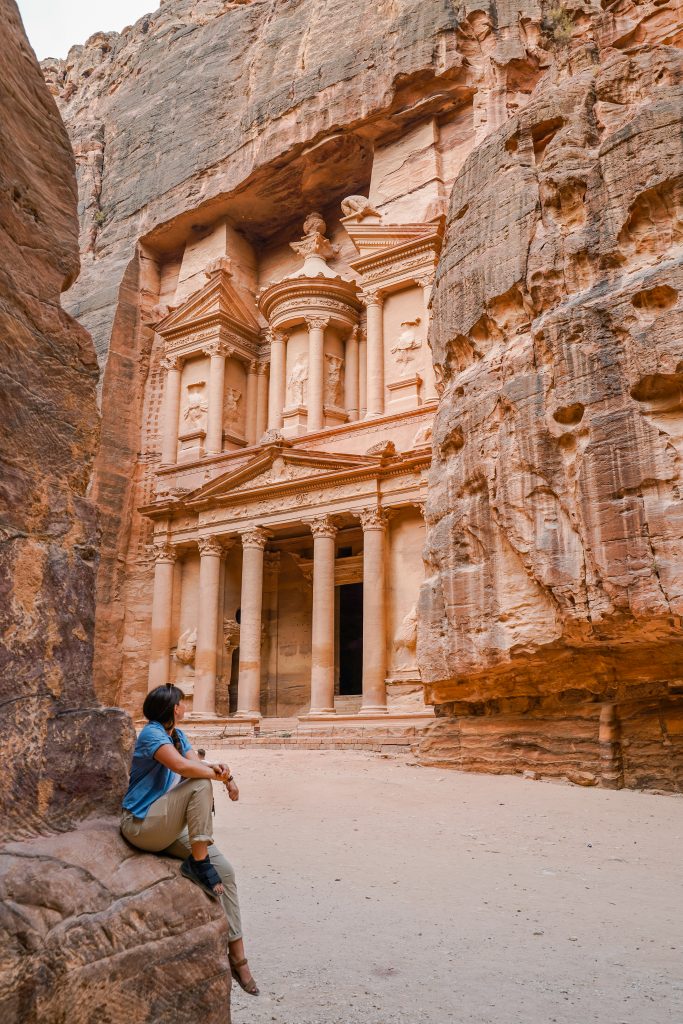
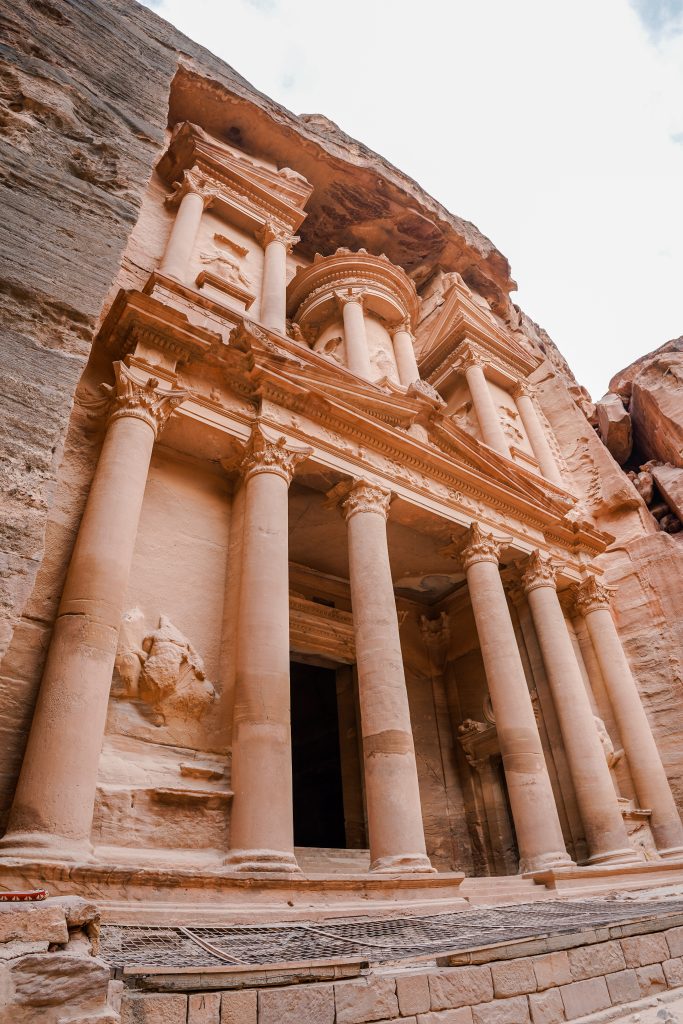
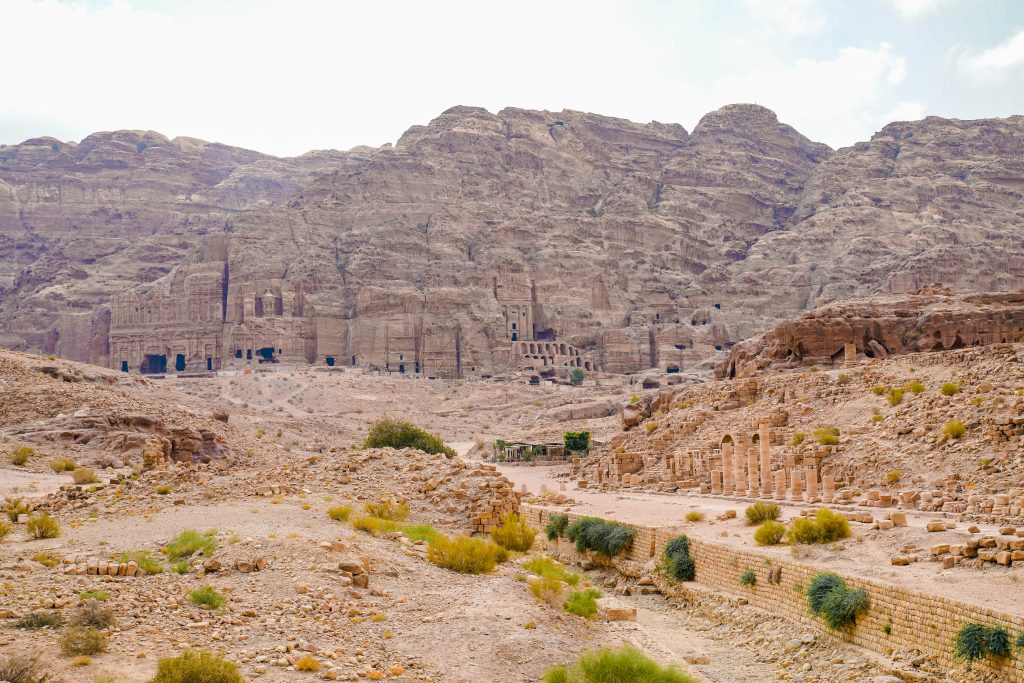
After saying goodbye we ran into a small dog whom I absolutely fell in love with. (She was sooo sweet) The pup escorted us the rest of the way to the Monastery trail where we parted ways. Then up up up we went. To be honest with my foot, I was super grateful it was stairs! So much easier to manage in a boot. We saw very few other people on the trail and when we reached the top we had it completely to ourselves for over an hour.
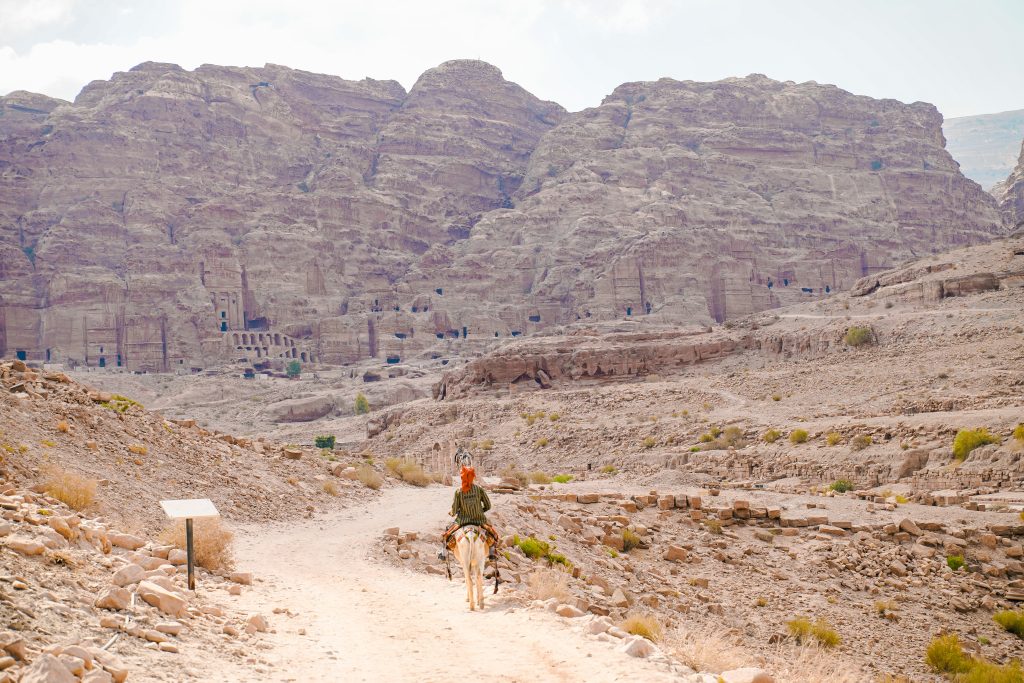

On the way up and down we were a bit bothered by the various sellers. (read the tips up at the top on best way to deal) Otherwise while it was a lot of climbing we didn’t find it too hard and the view was absolutely worth it!
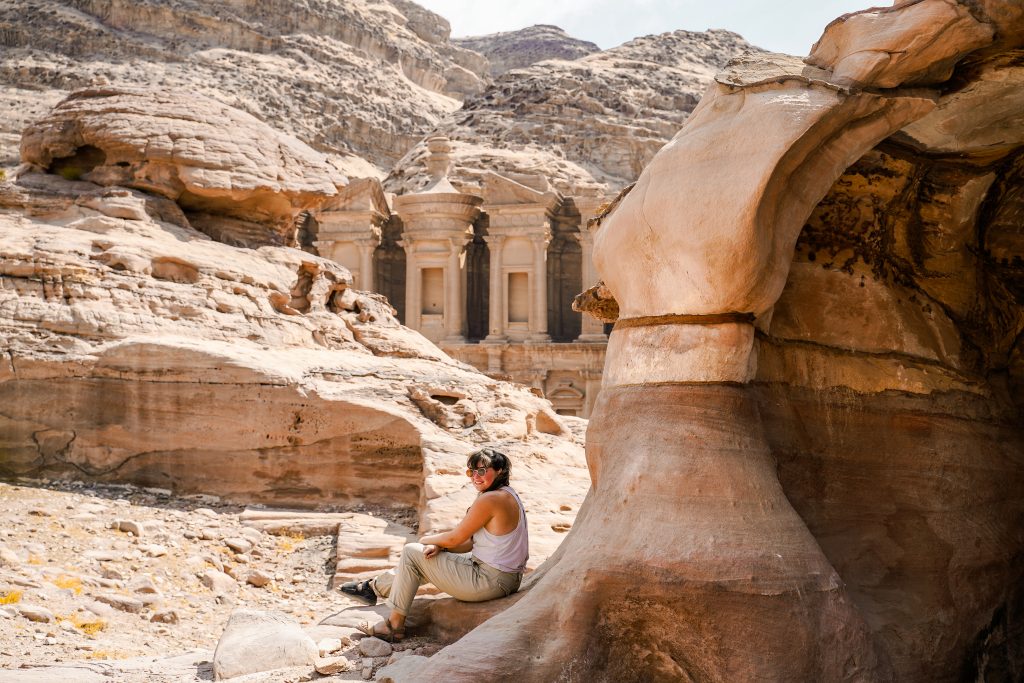
Once we got back down we wandered our way back towards the Royal Tombs which we climbed up and explored while I tried to decide if I felt good enough to climb up to the Treasury overlook. In the end, my foot was hurting and the day had become really hot so we decided to call it a day and start the 1.5 mile hike back to the entrance.
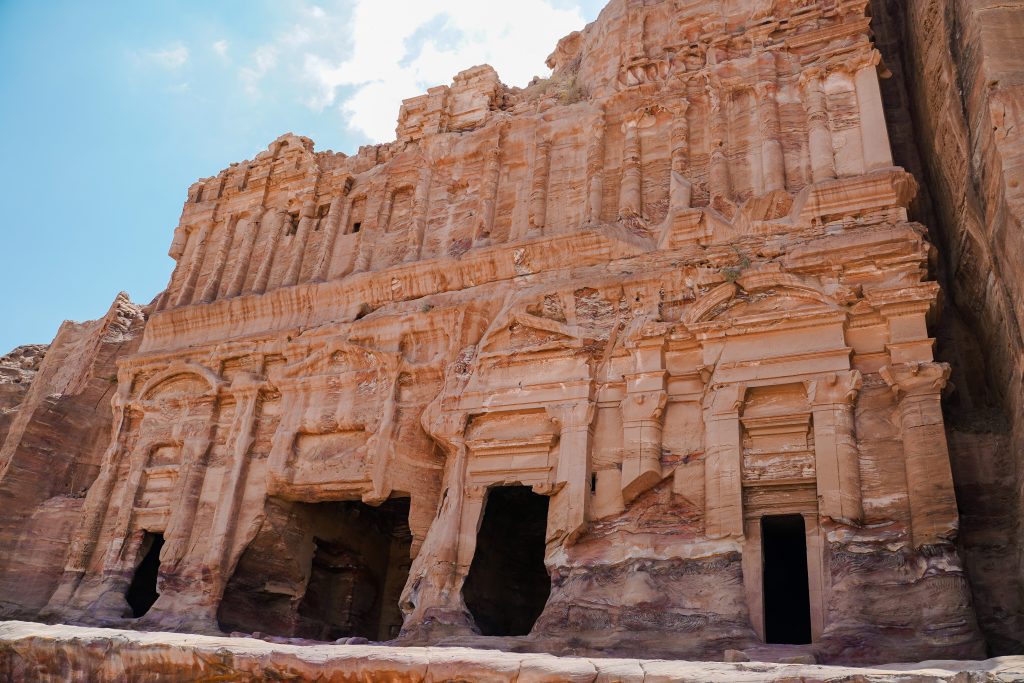
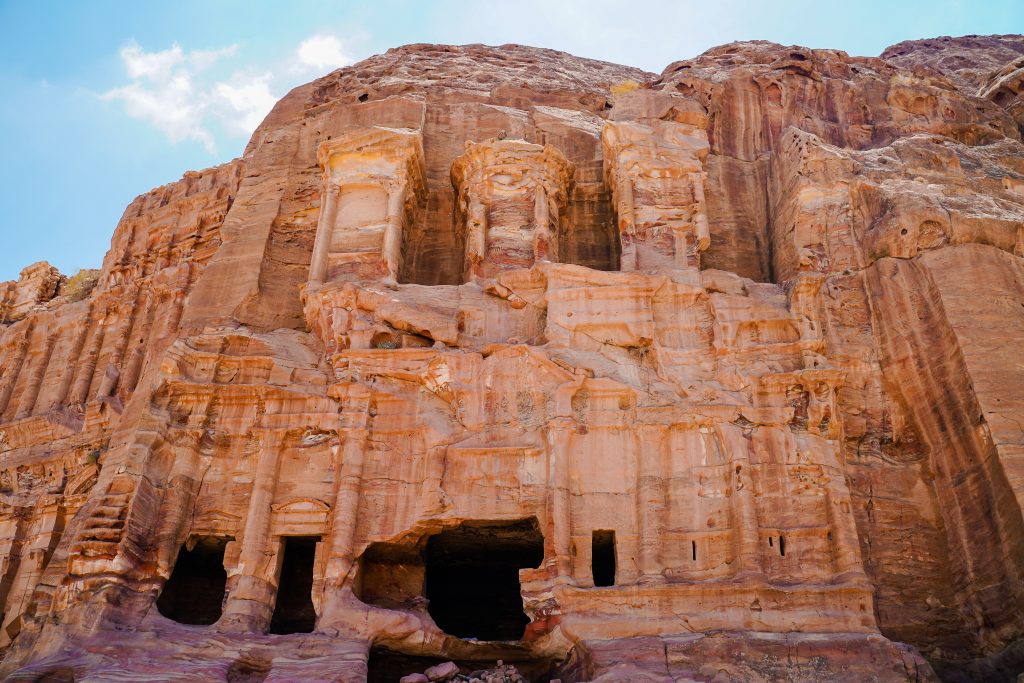
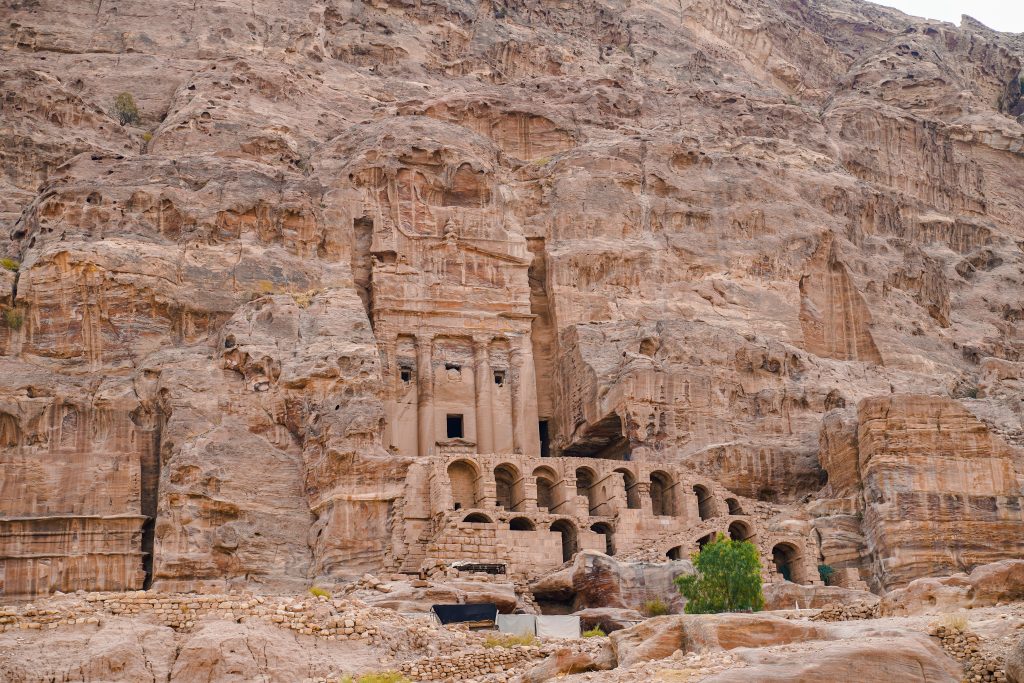
We could have gotten a horseback ride (since it is “included” in the ticket) from the mouth of the slot canyon back to the main entrance (about 1 mile) but they were doing it in groups and I didn’t want to wait for them to complete the group OR to have to negotiate our “tip” amount as our guide warned us we’d need to do. So we just walked out the rest of the way happily ending our day at our airconditioned hotel.
*I wish we could have experienced Petra at Night but it wasn’t running due to COVID.
Where to stay for your visit to Petra:
Best places for location:
- Budget: P Quattro Relax Hotel : 1.6km from Petra, beautiful rooftop pool, great price and rooms (cheapest hotel/ best value out of this whole list)
- Mid: Petra Guest House Hotel : 0km walk (closest hotel), no pool but comfortable rooms and still a good price. Really cool cave bar.
- Luxury: Mövenpick Resort Petra : 0km walk (right across the street), again no pool but highly rated and well known hotel brand.
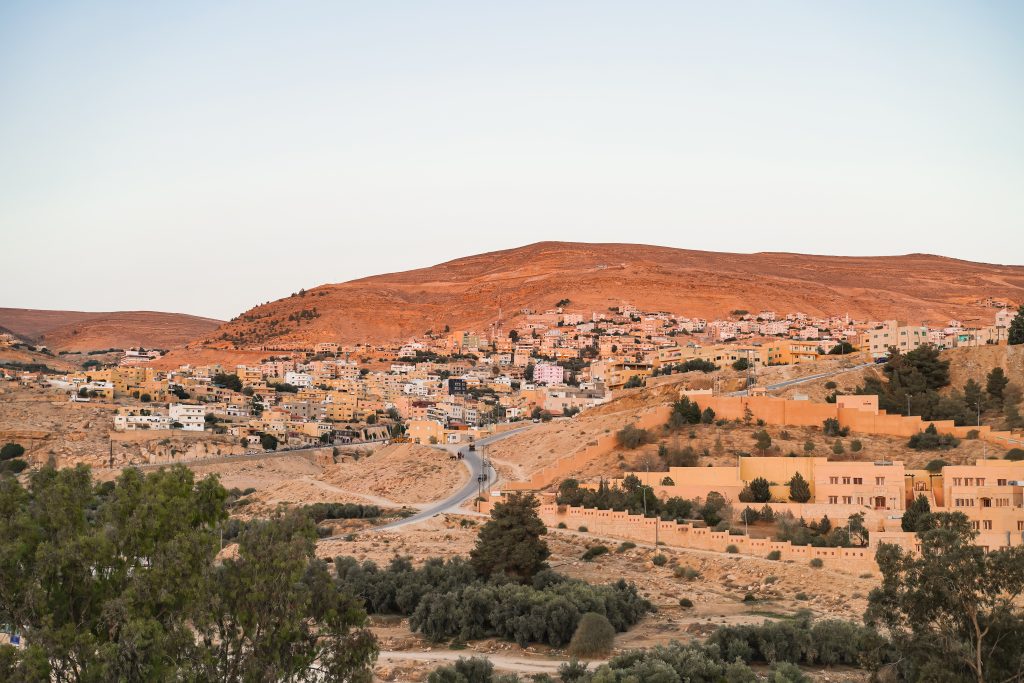
Best hotels for a unique experience:
- Budget: Infinity Lodge : 1km from Petra; beautiful rooftop views and unique architectural rooms. no pool
- Mid: The Old Village Hotel & Resort : 3.2km from Petra; beautiful views, pool, and unique architectural rooms
- Luxury: Seven Wonders Luxury Camp